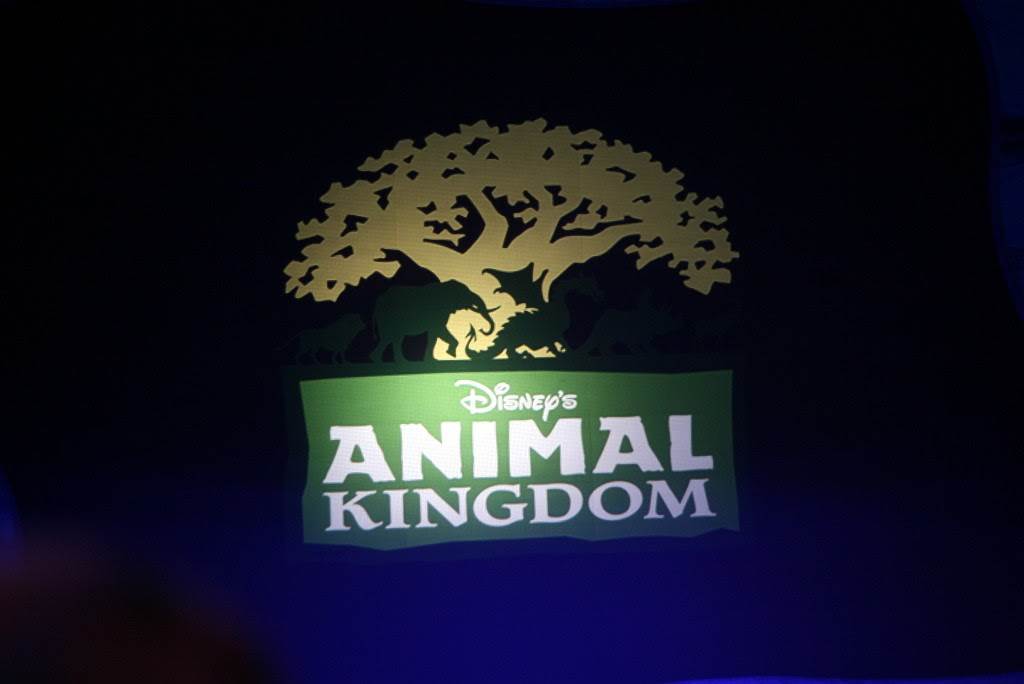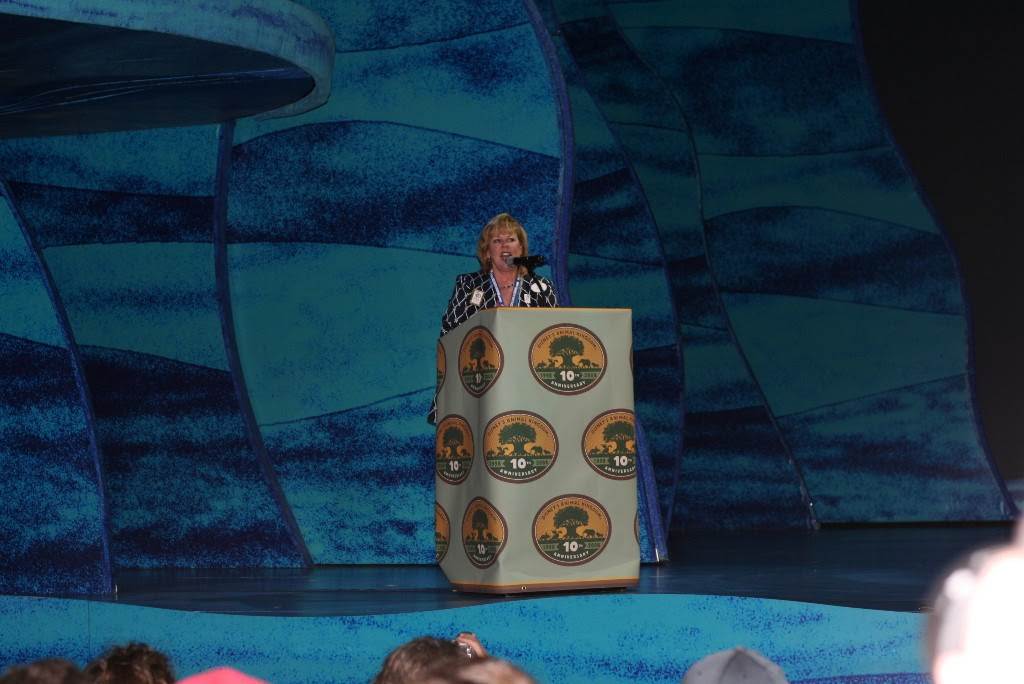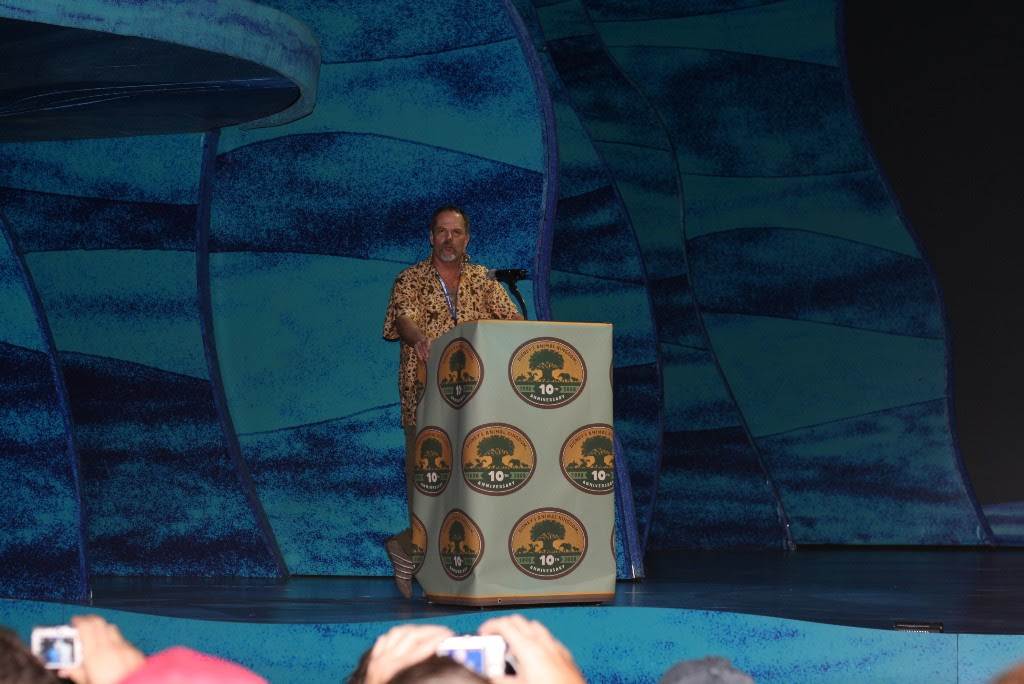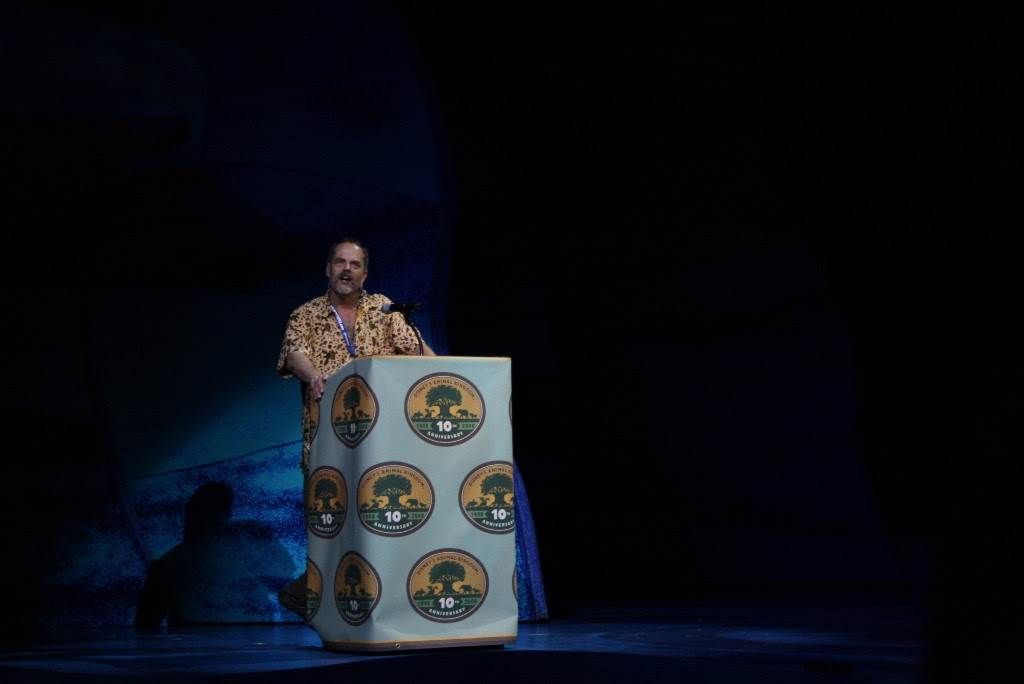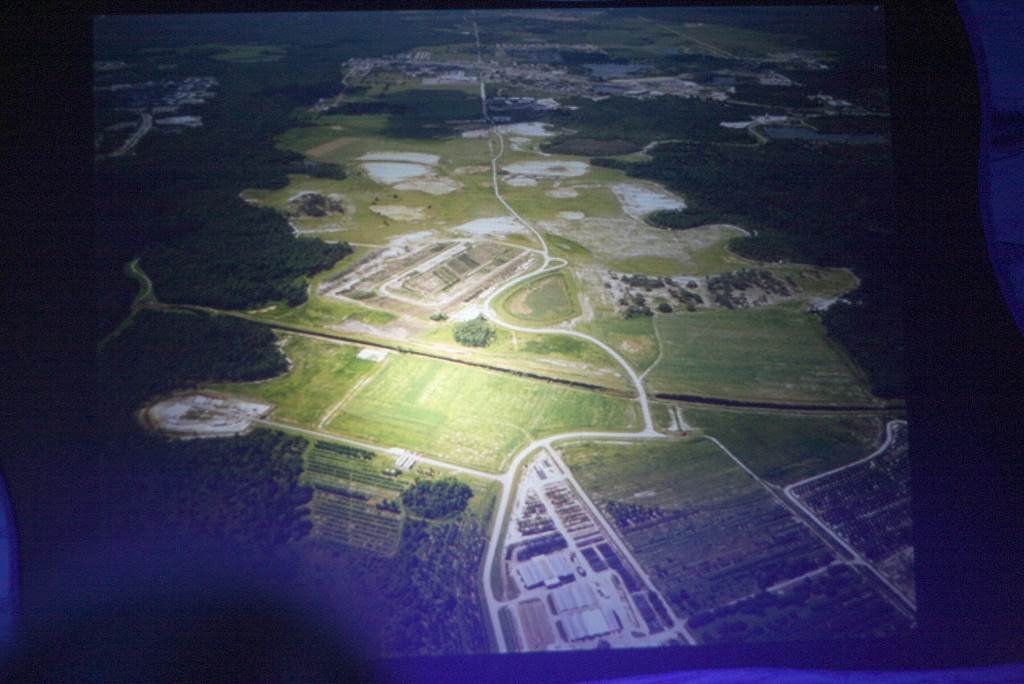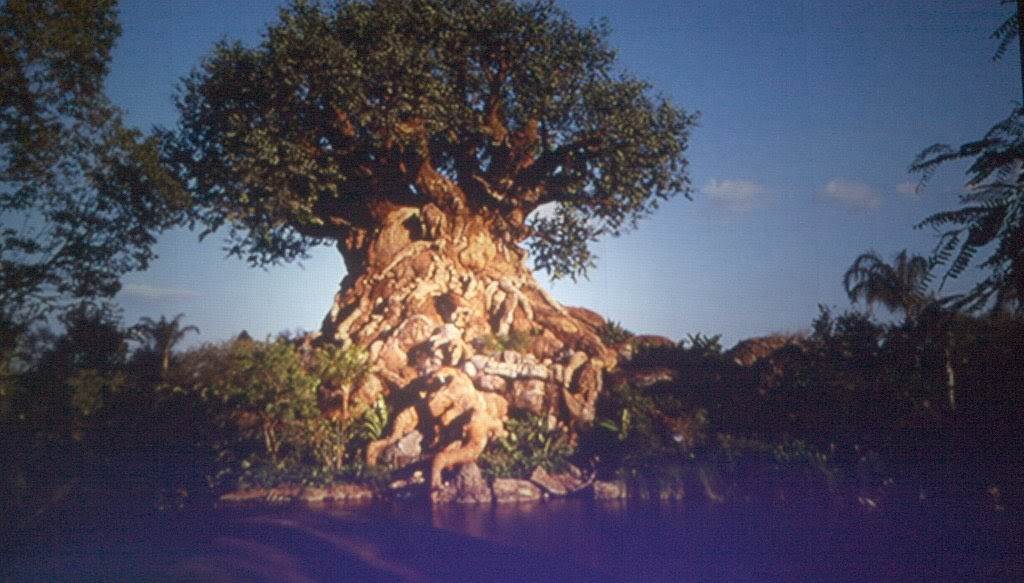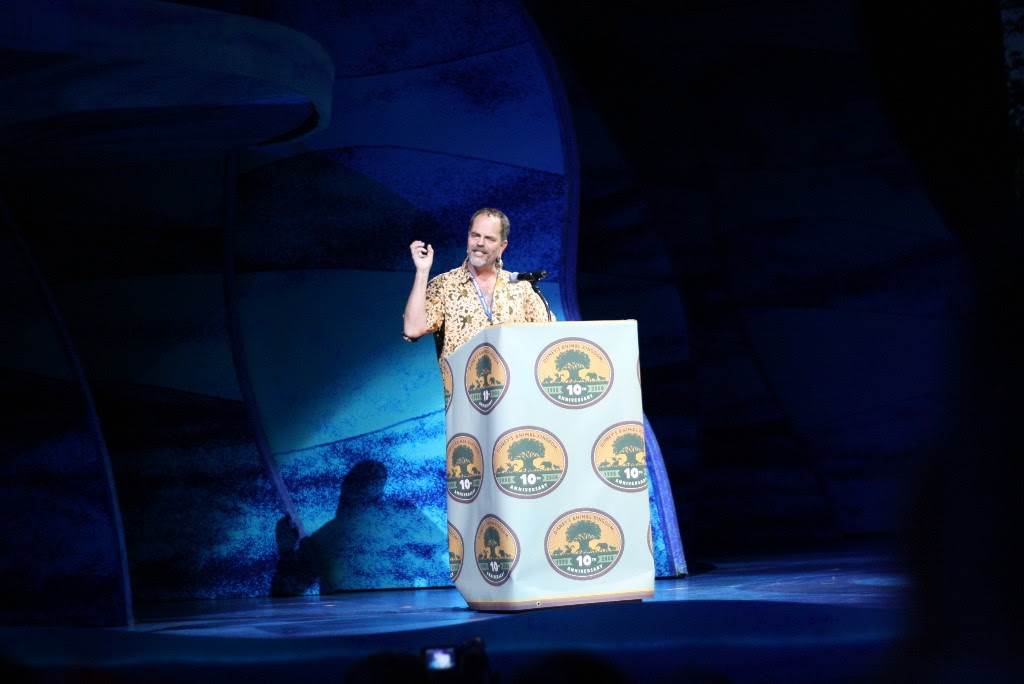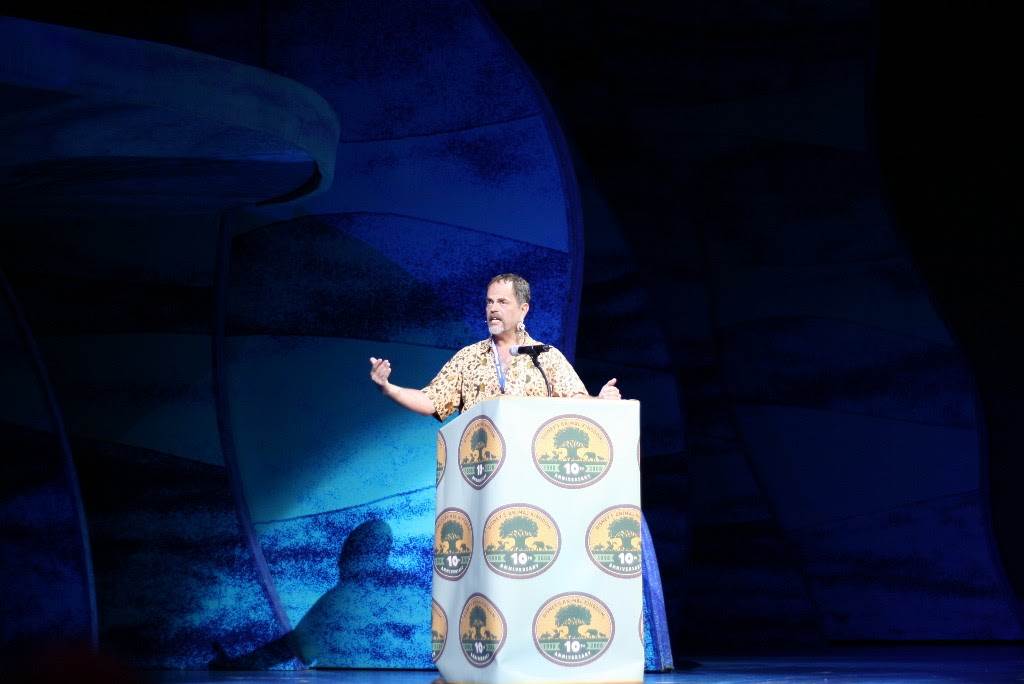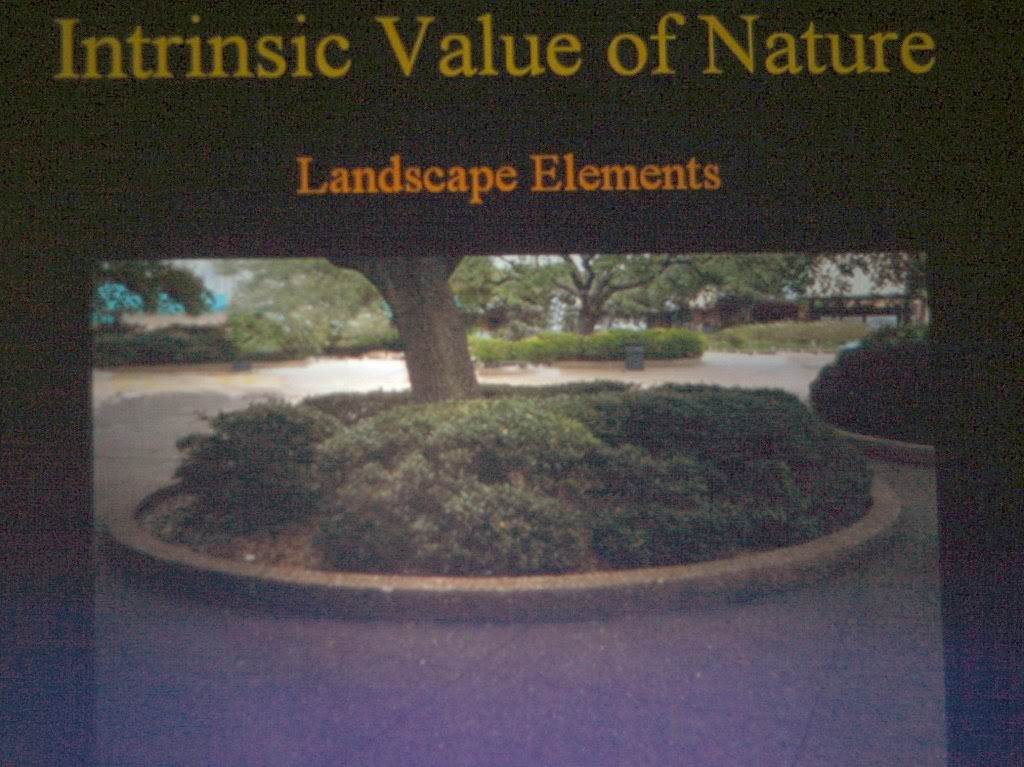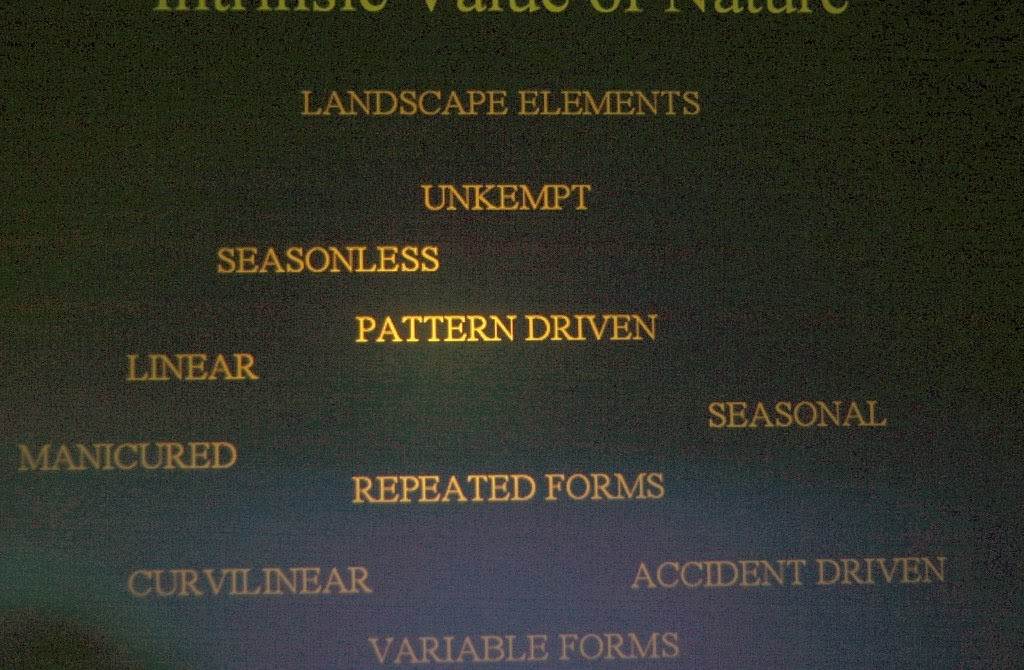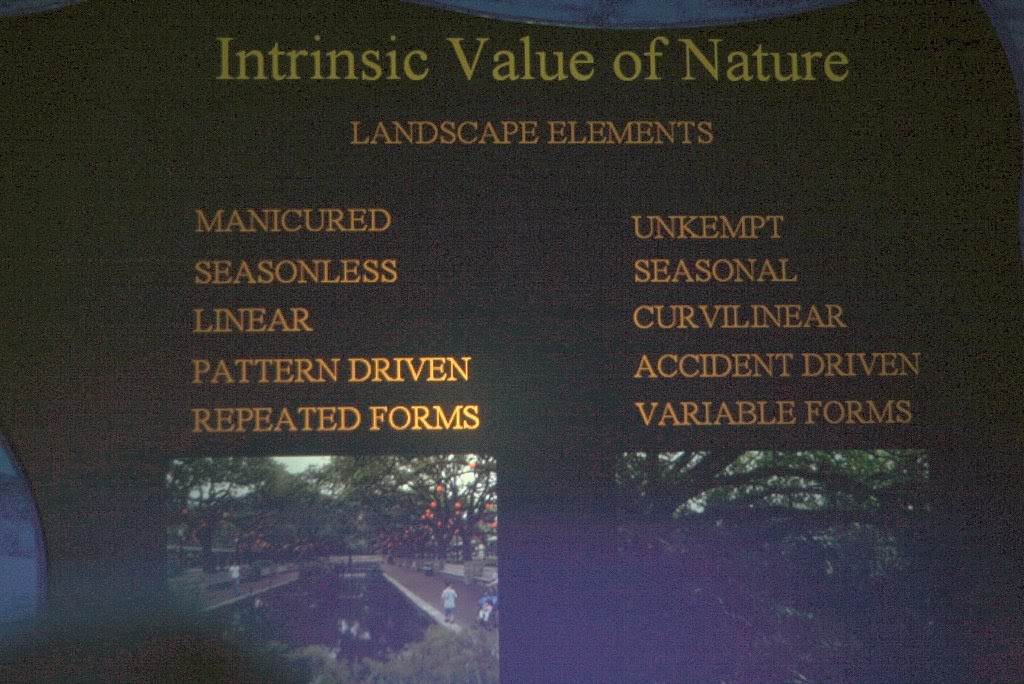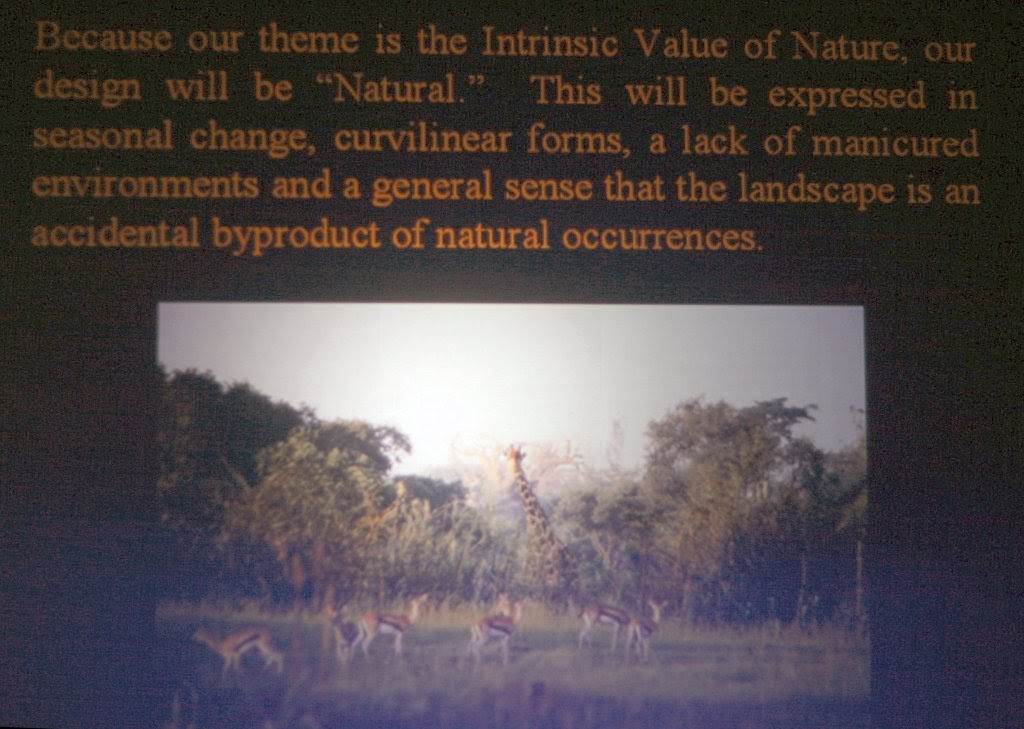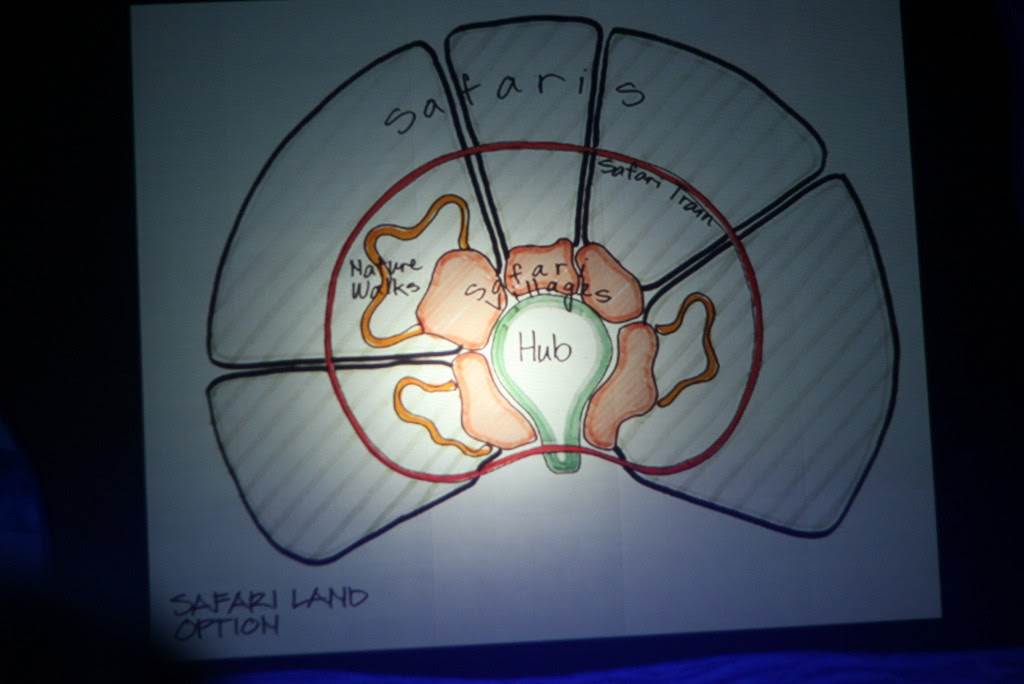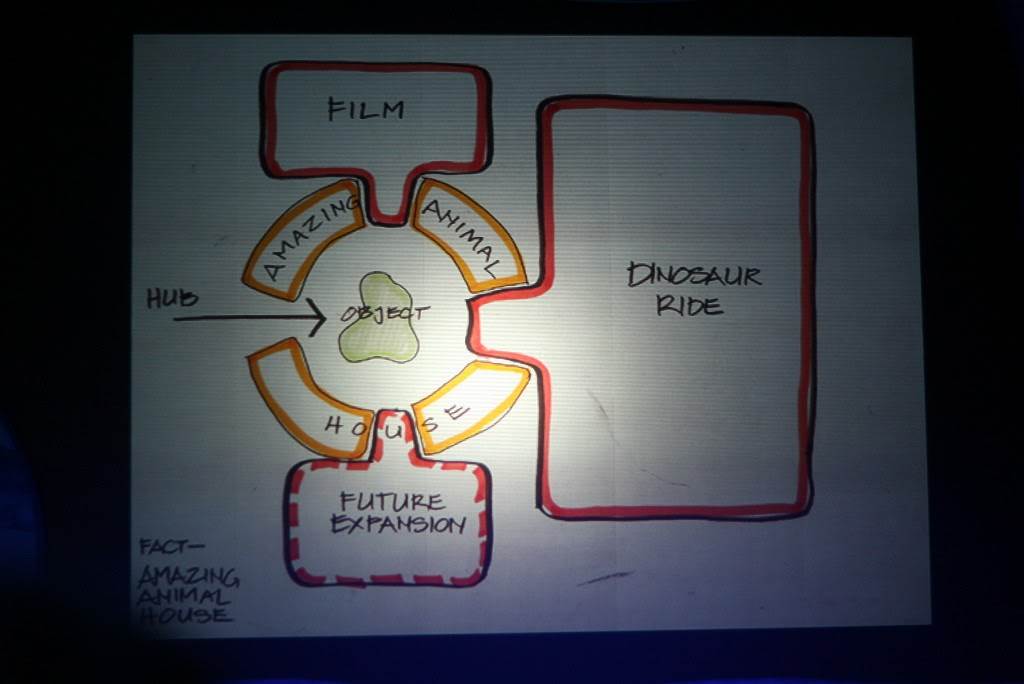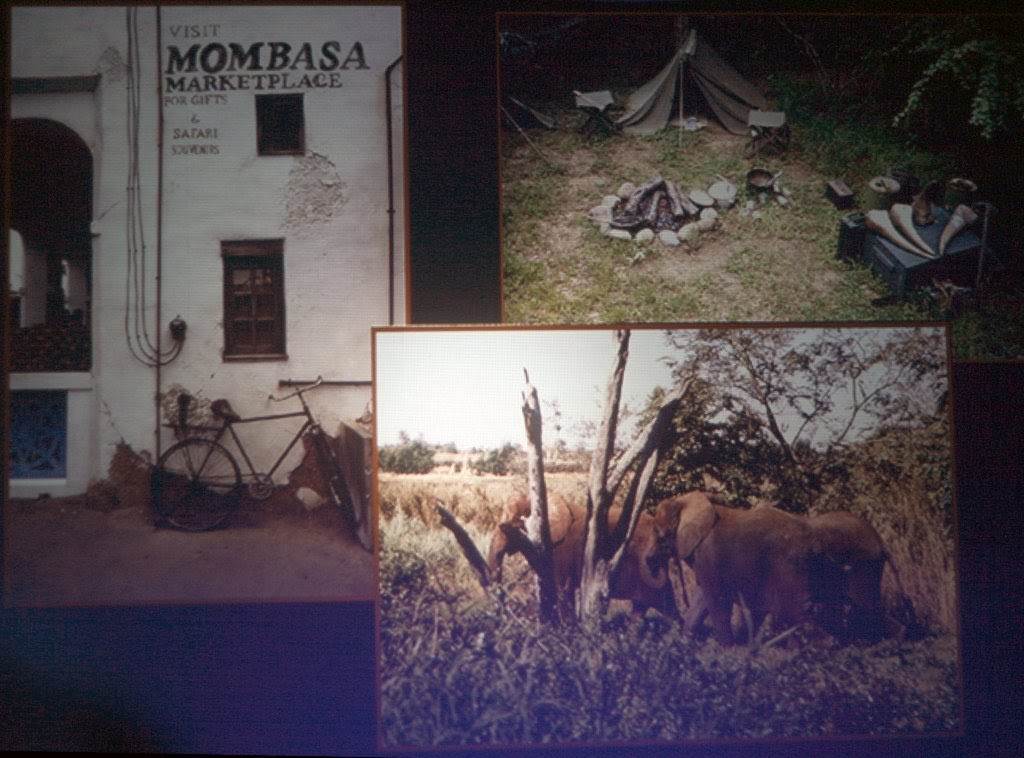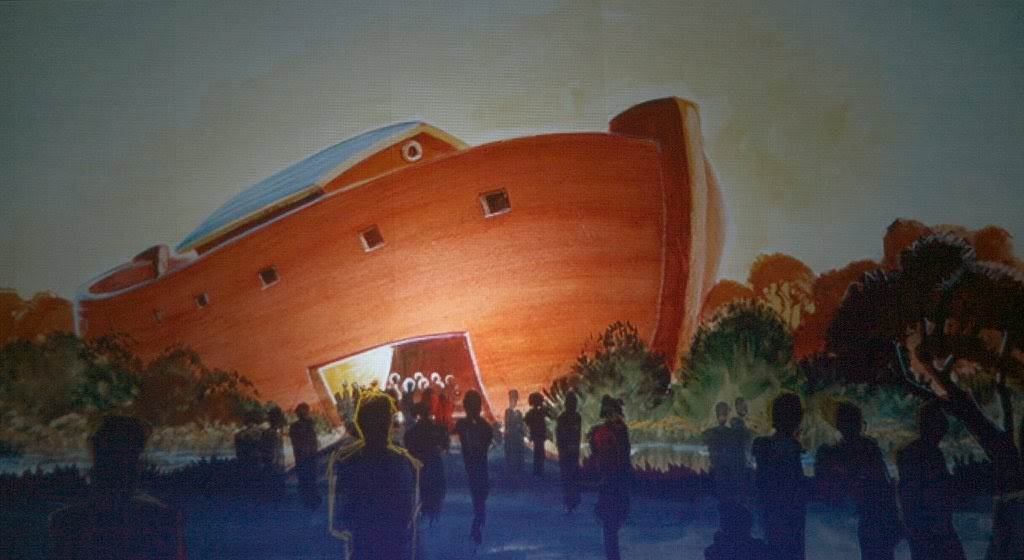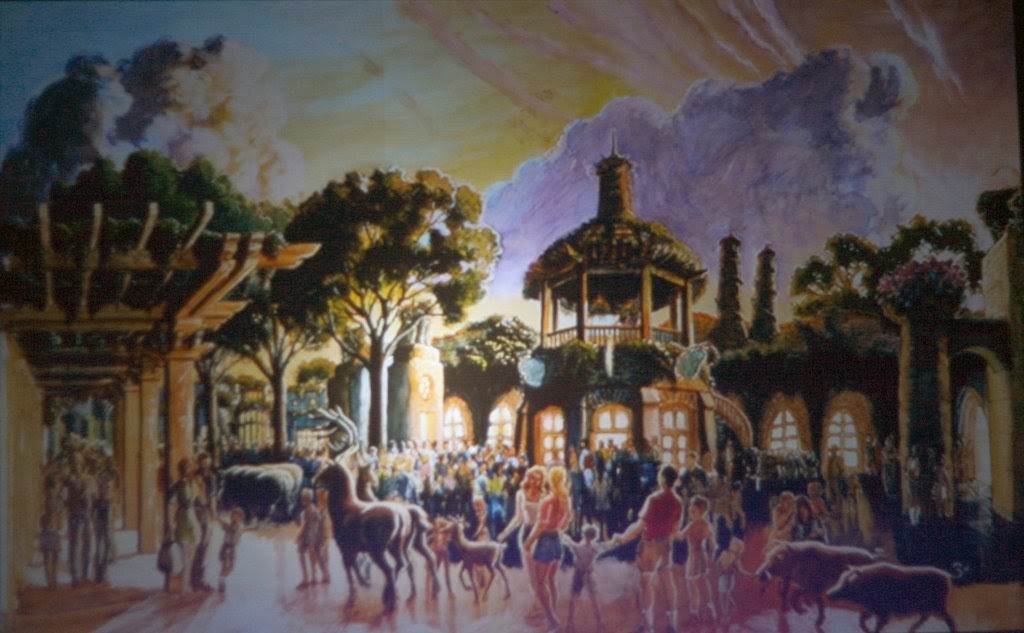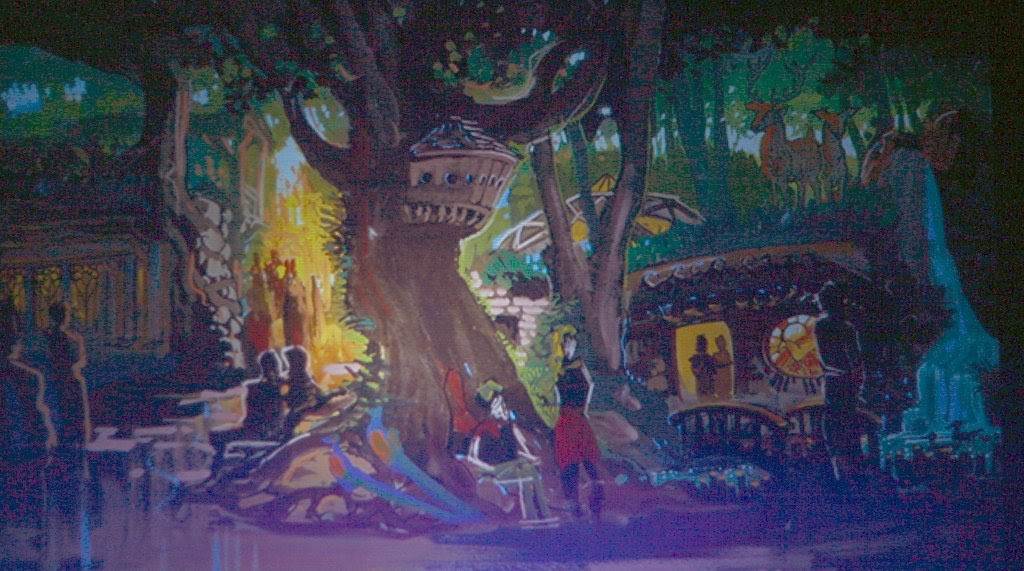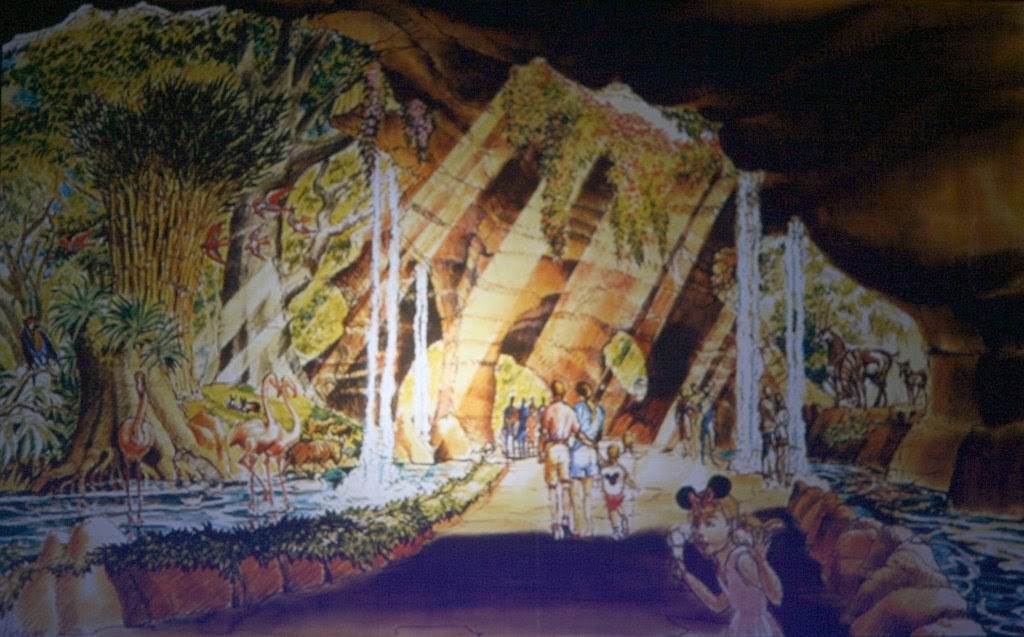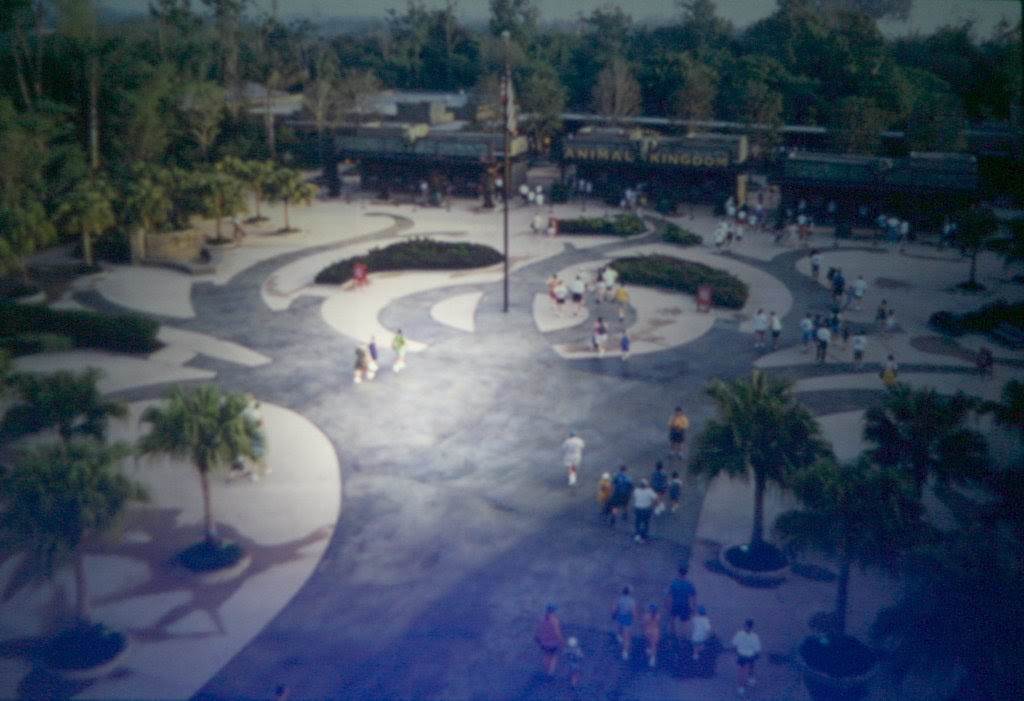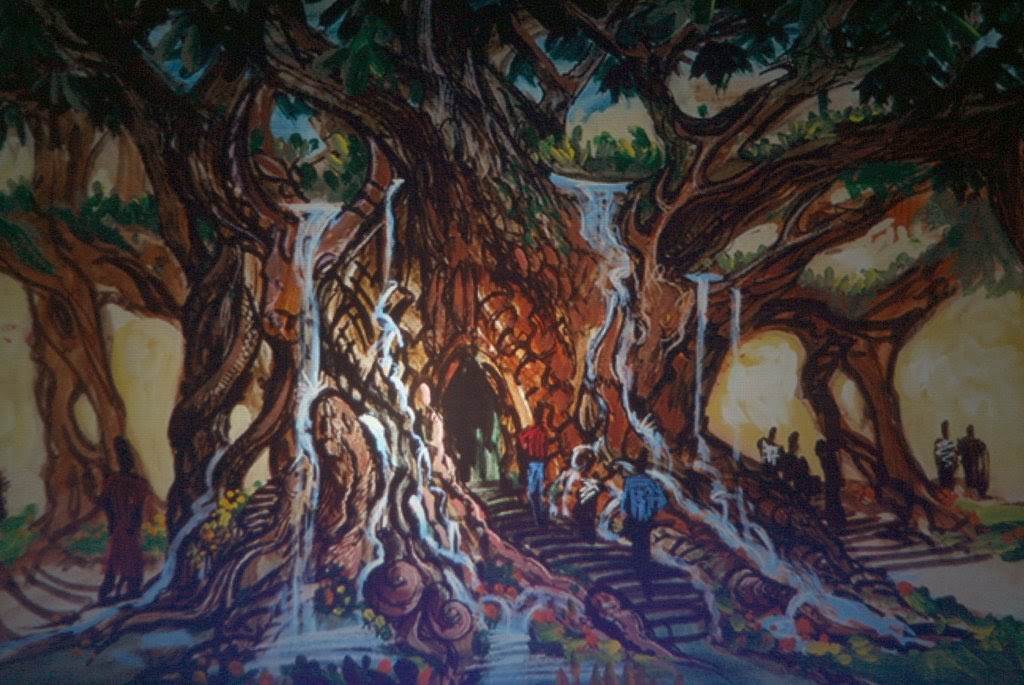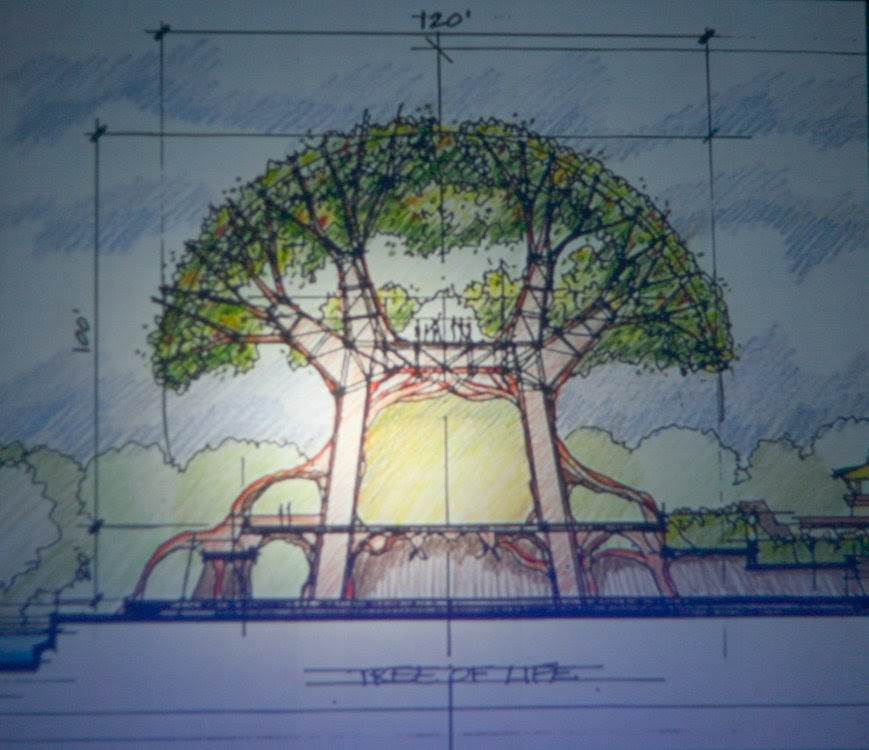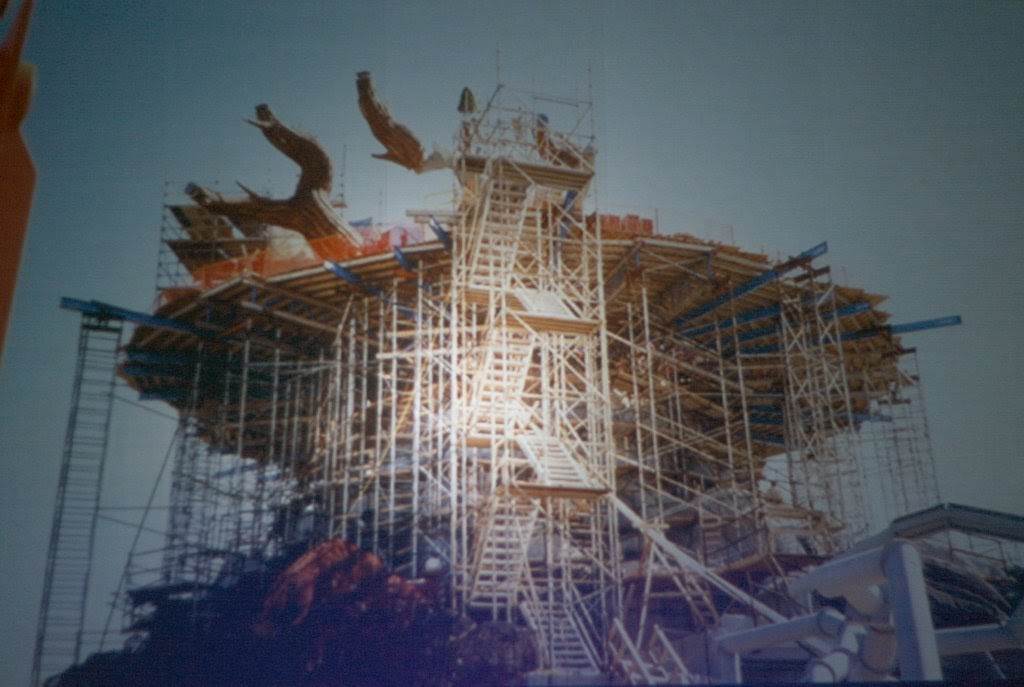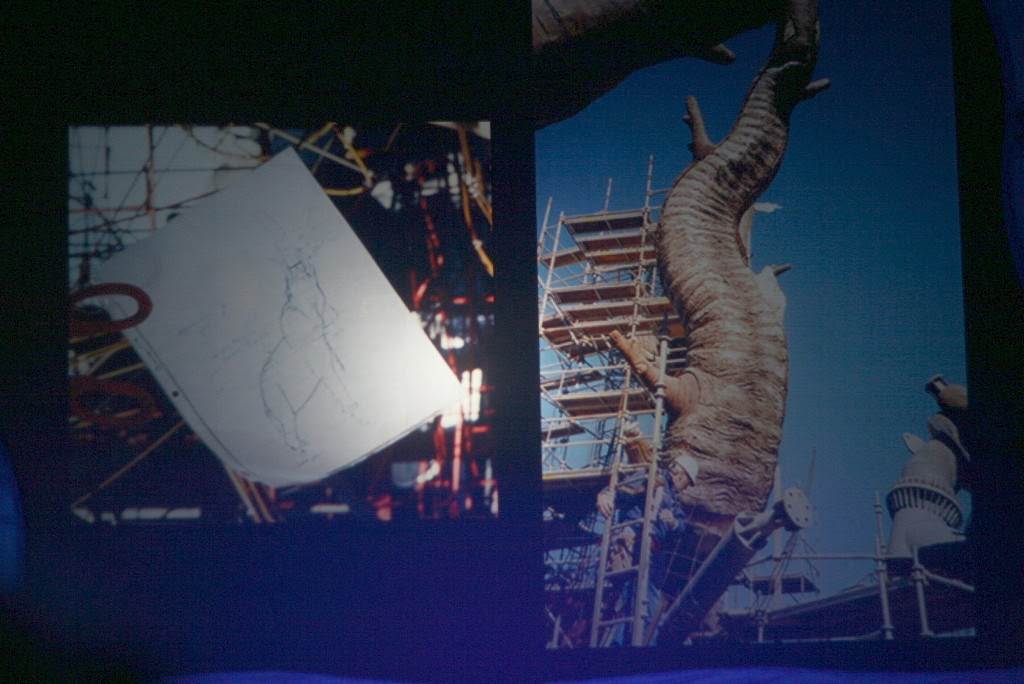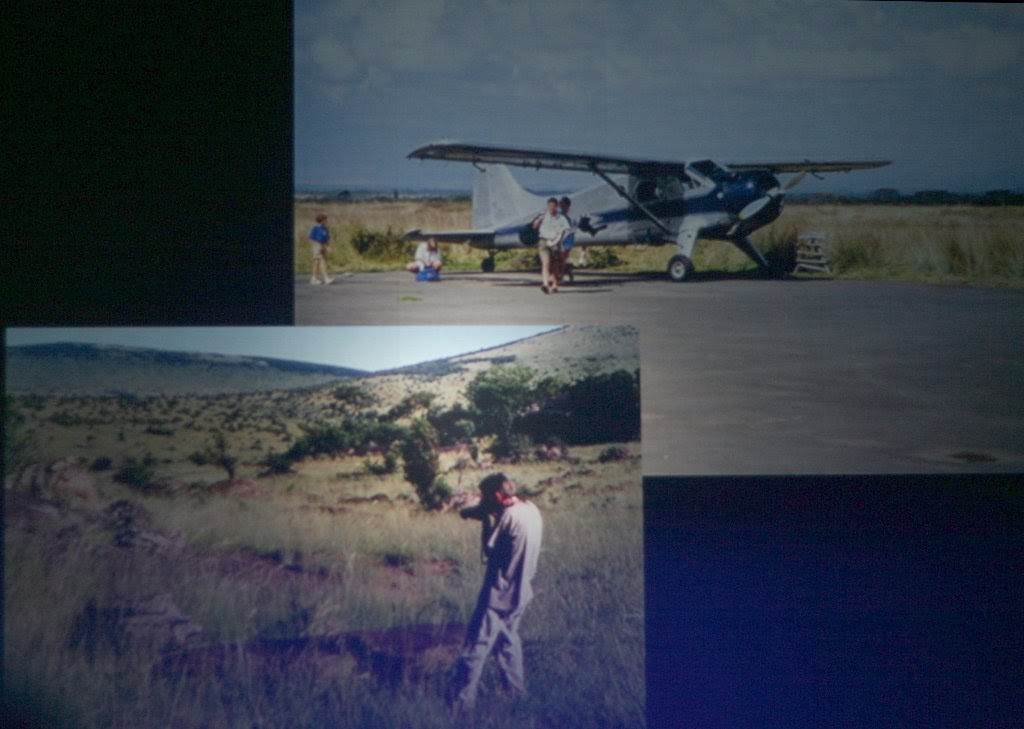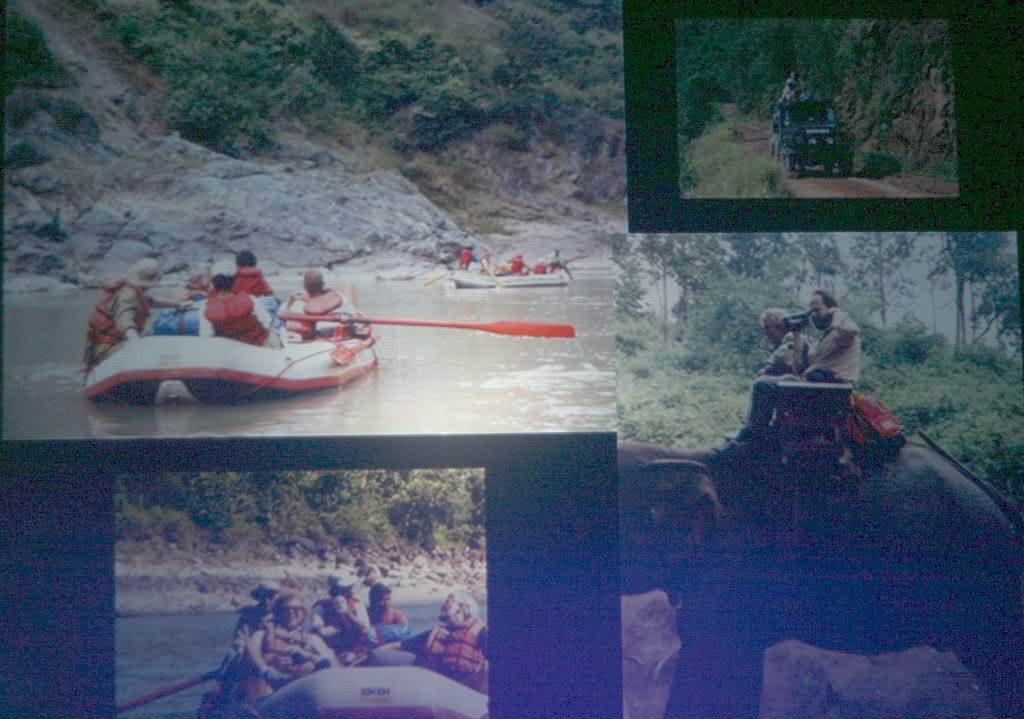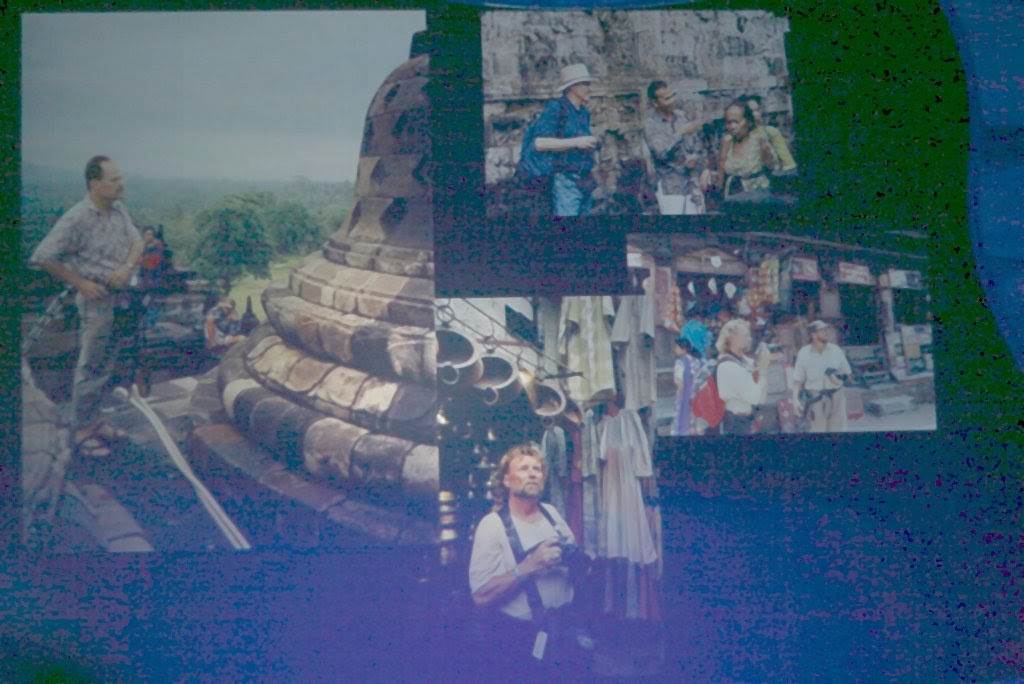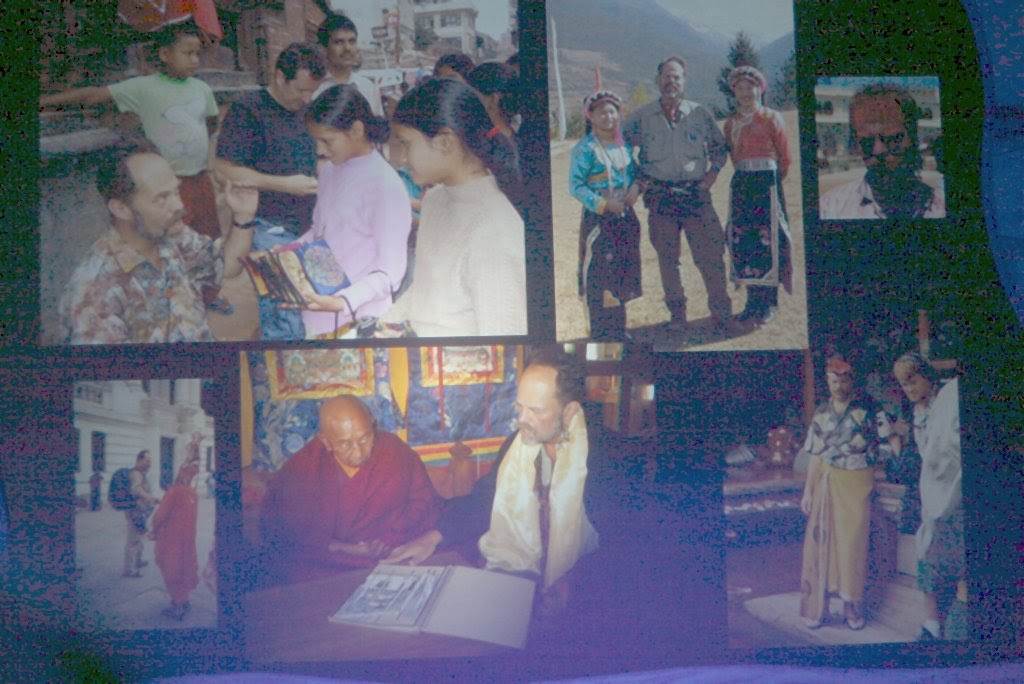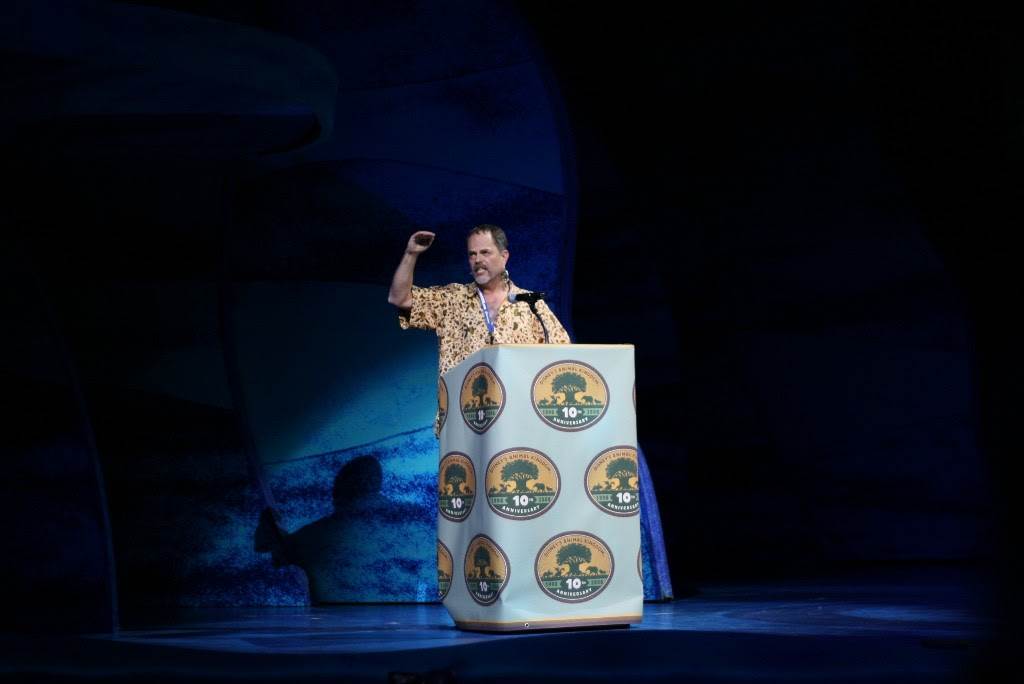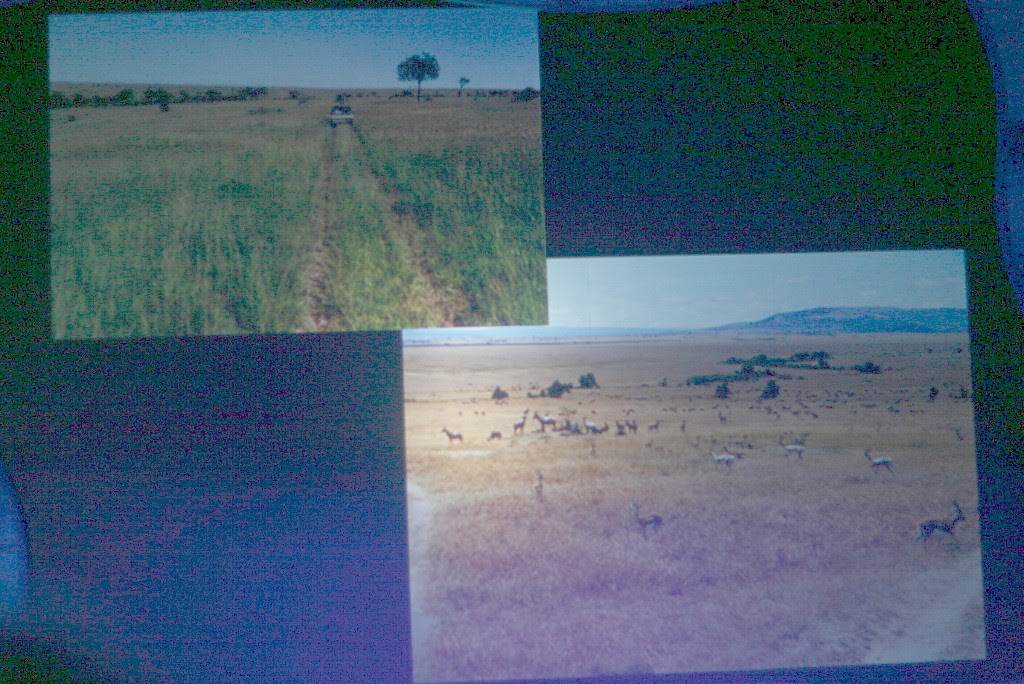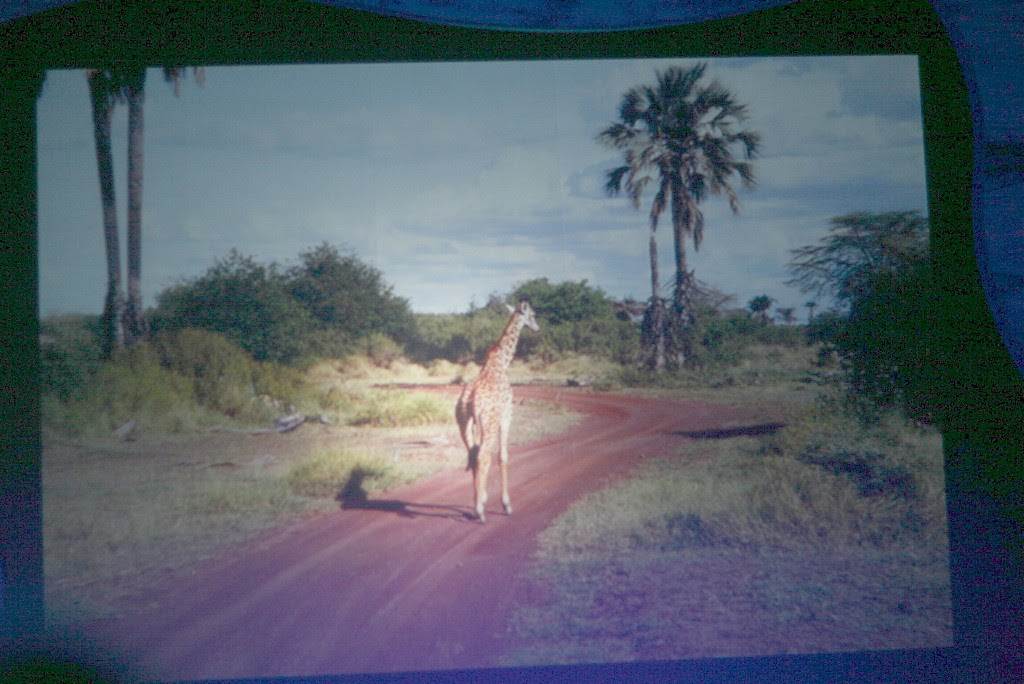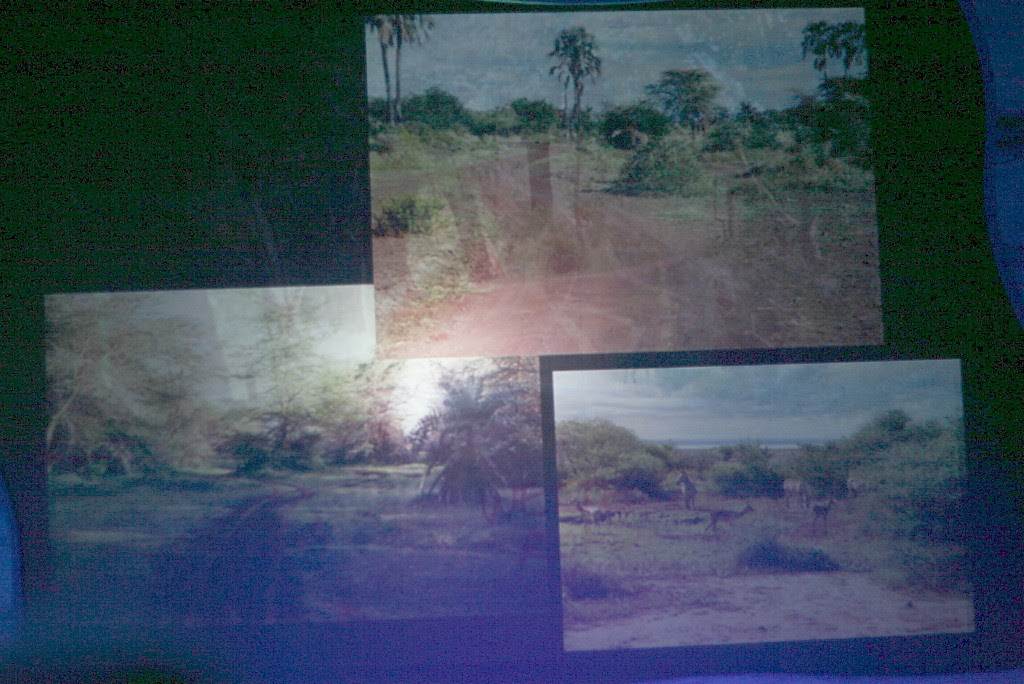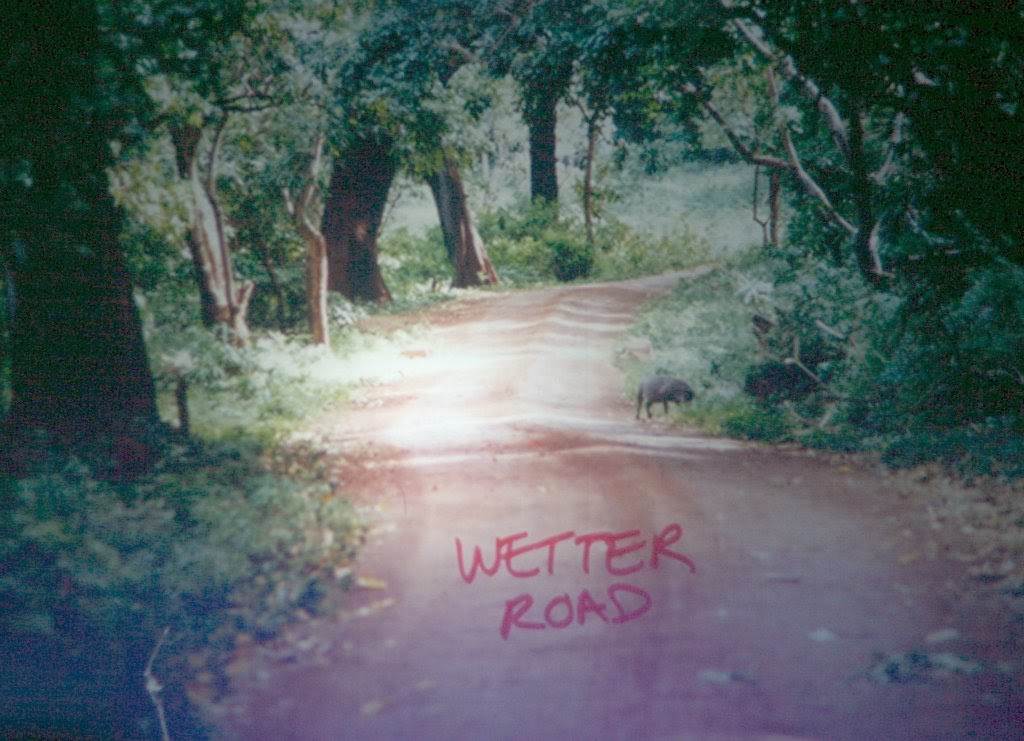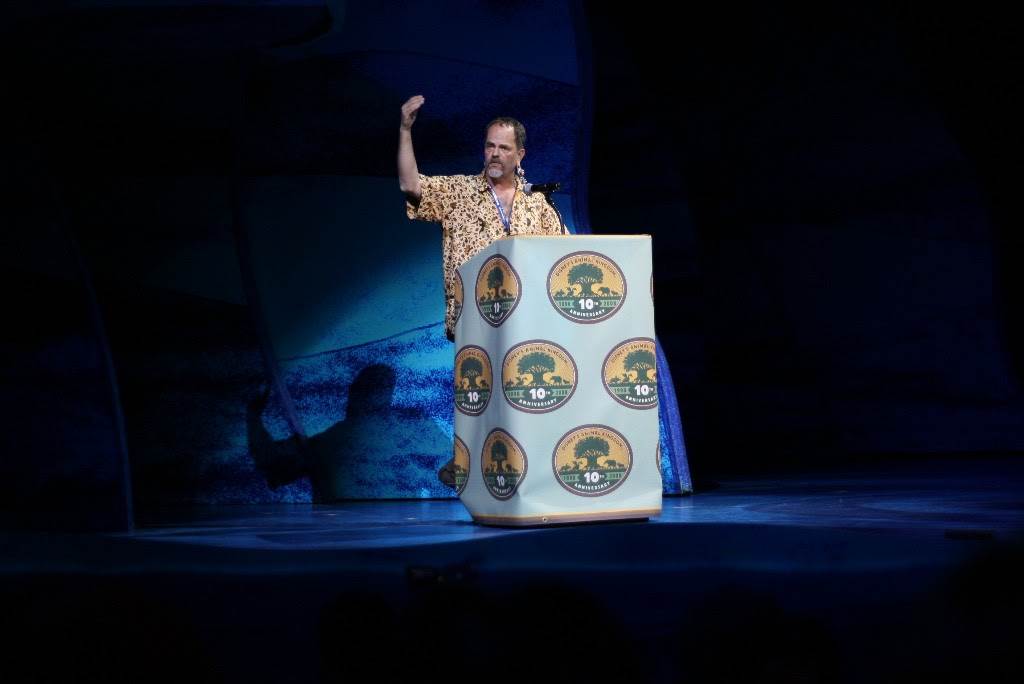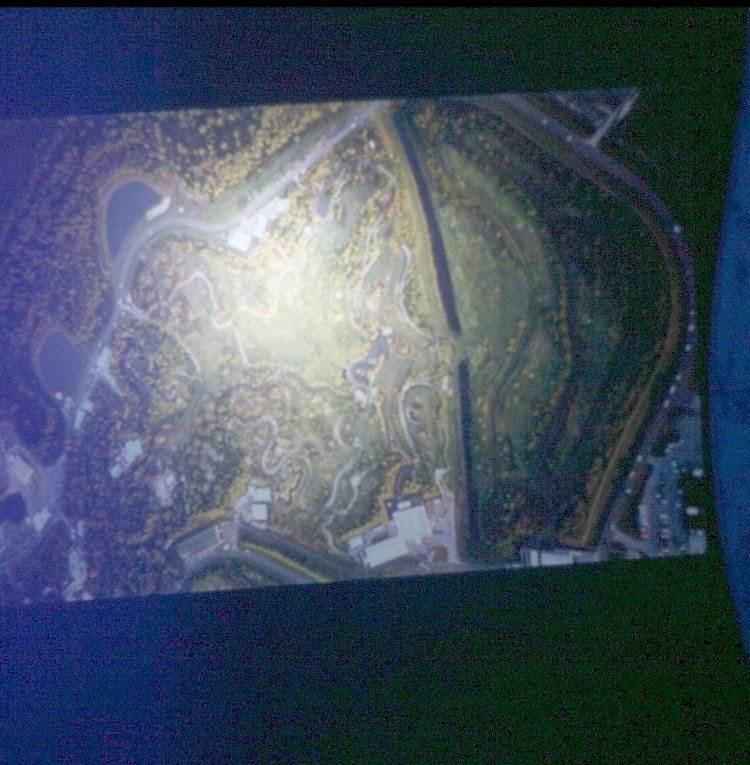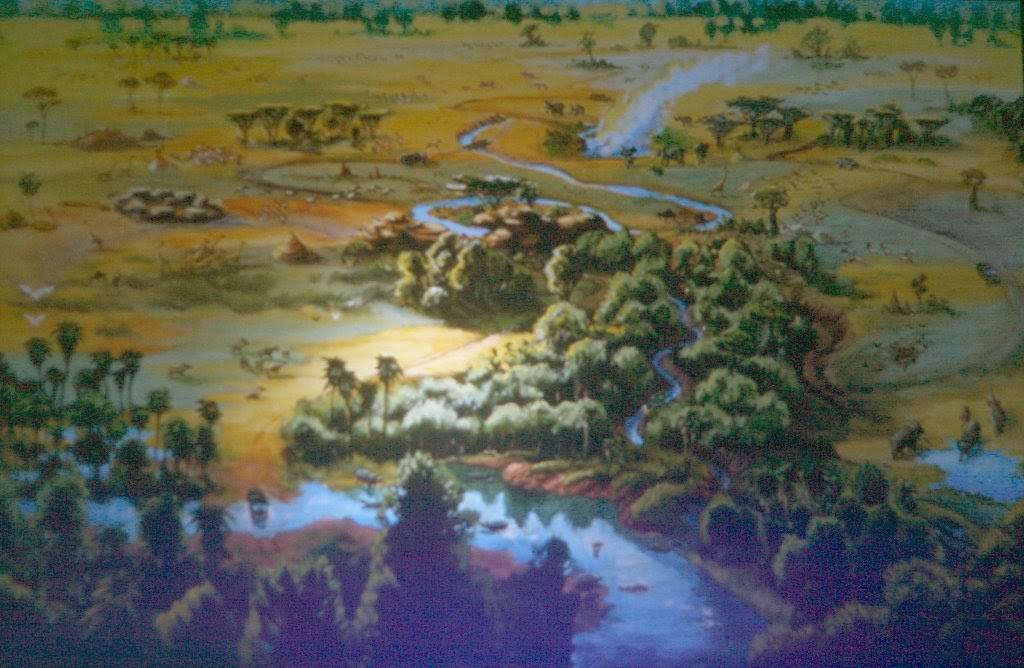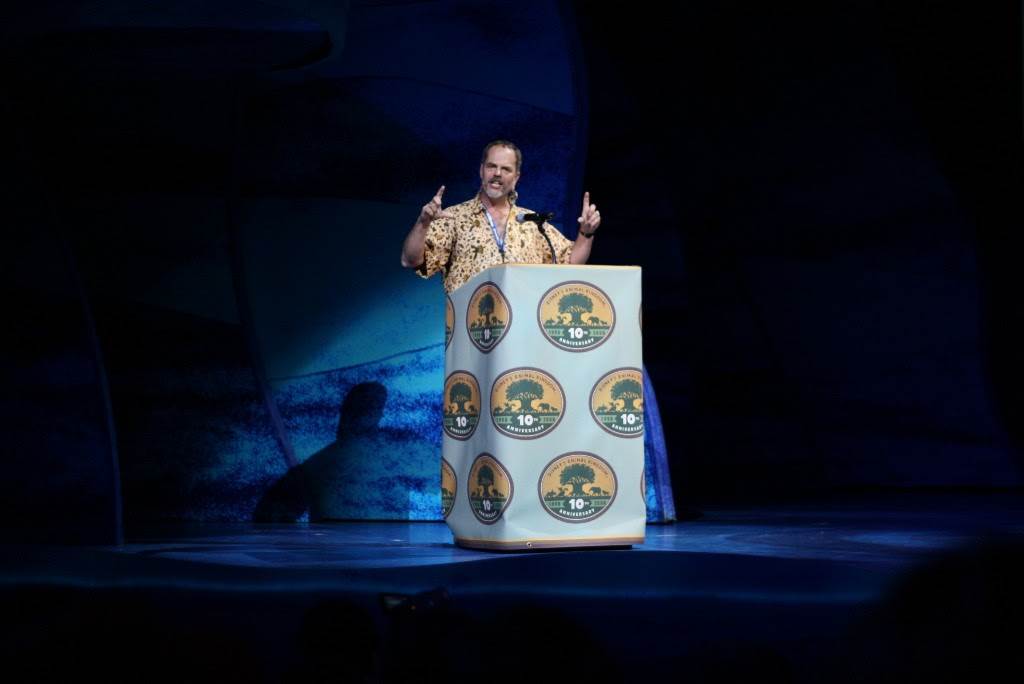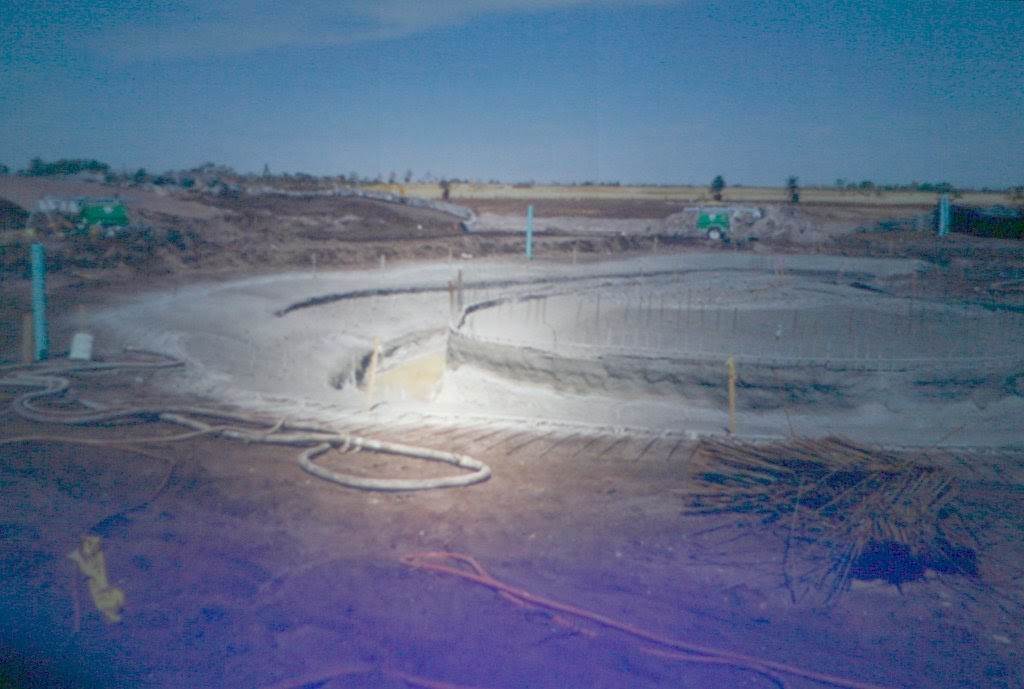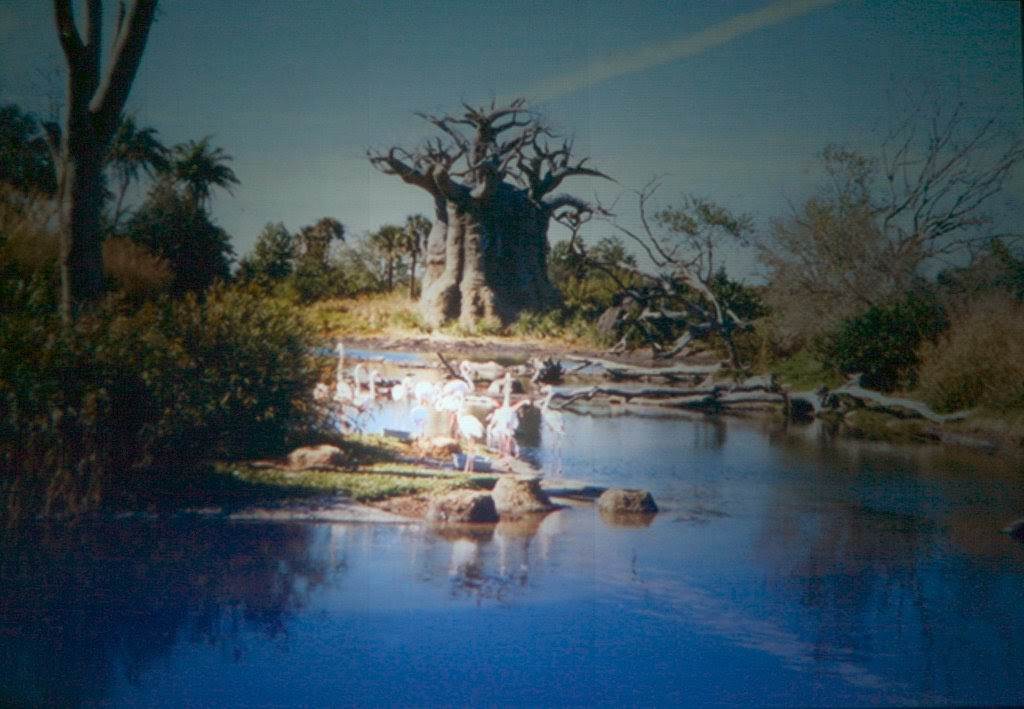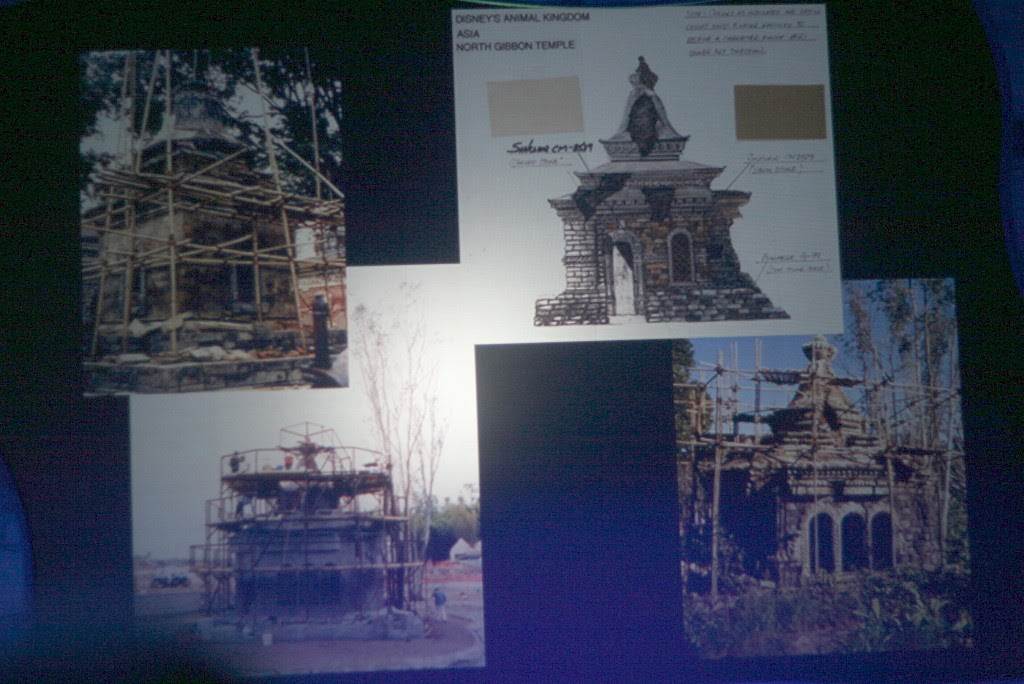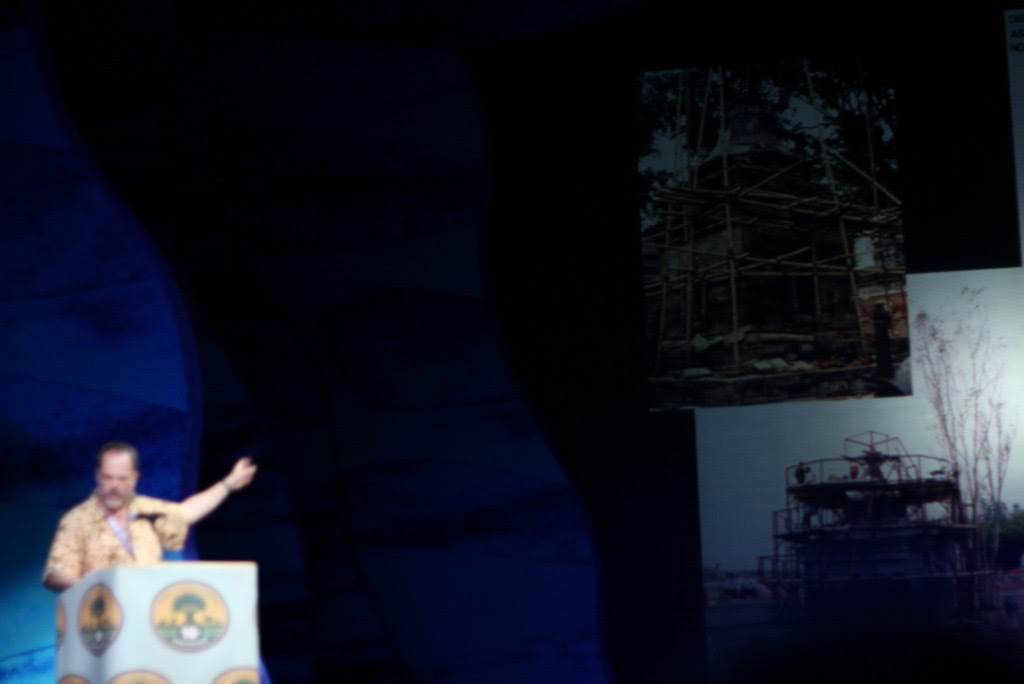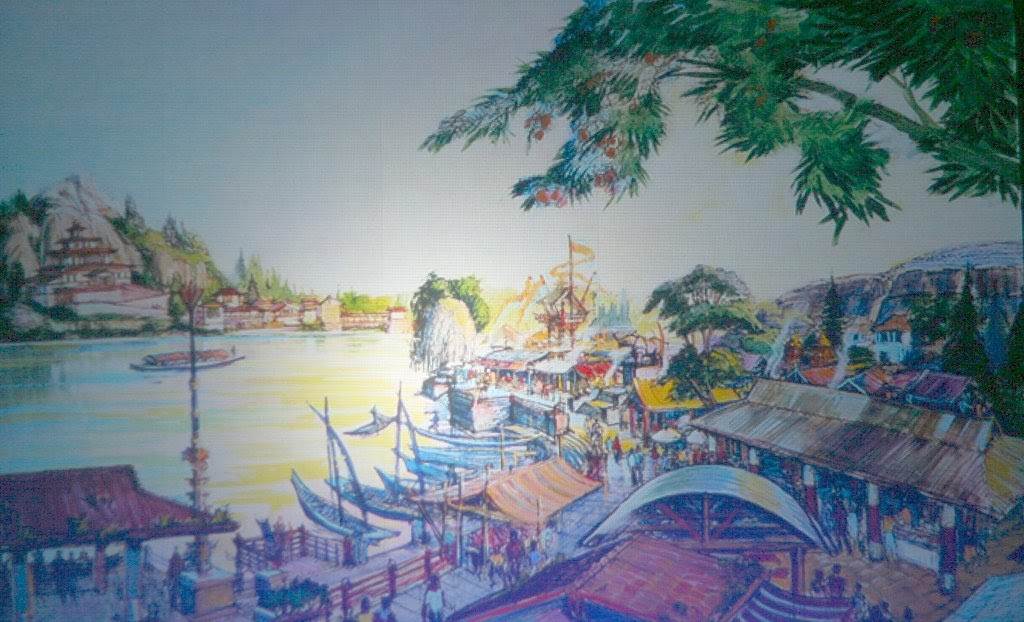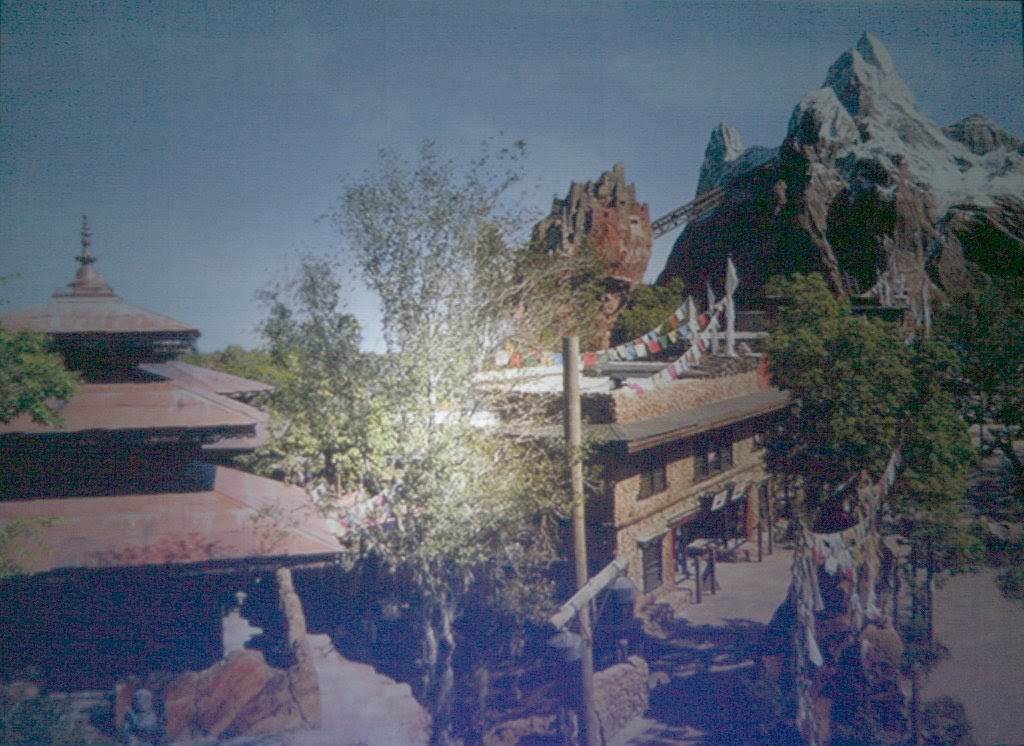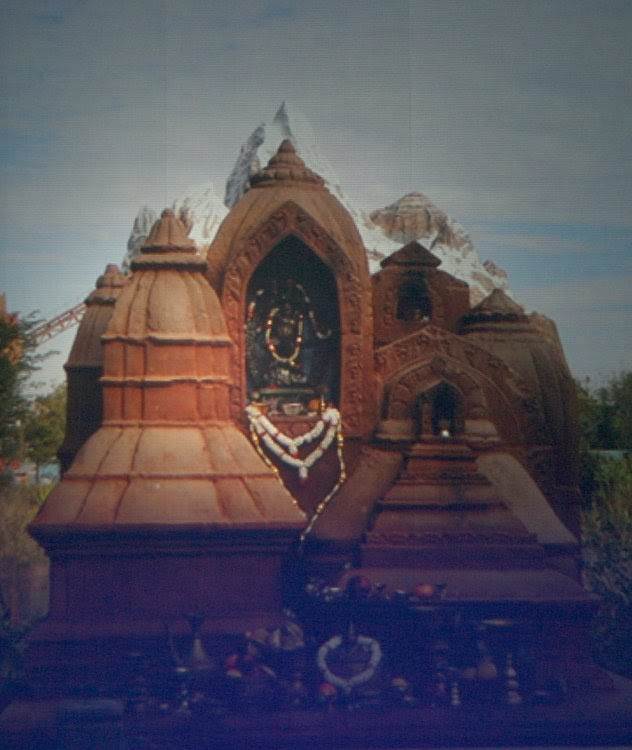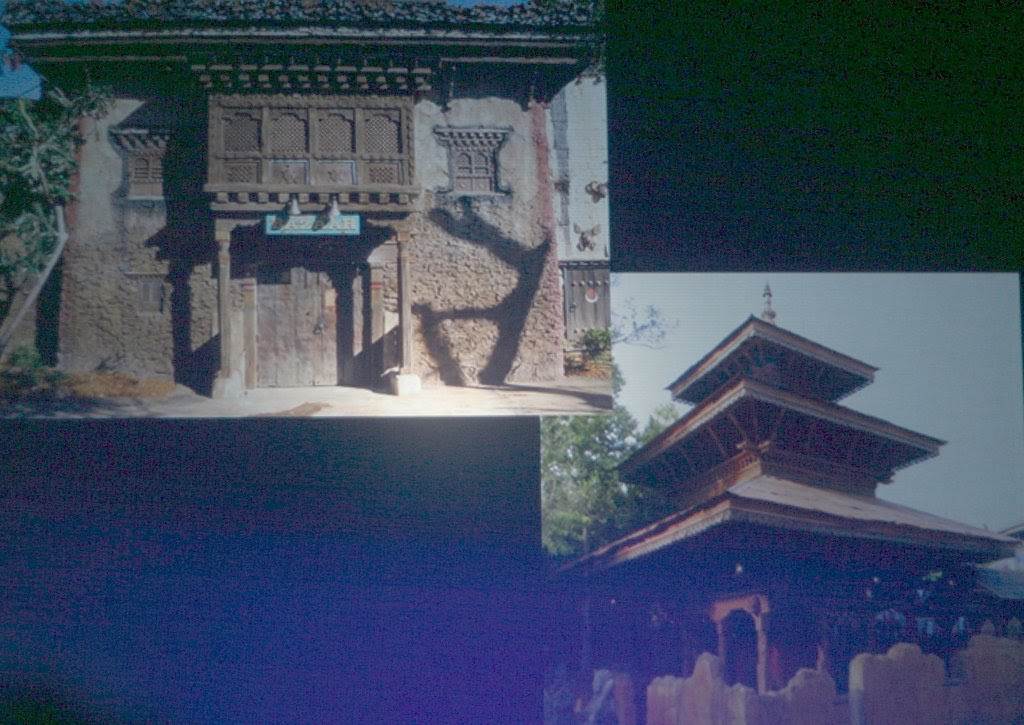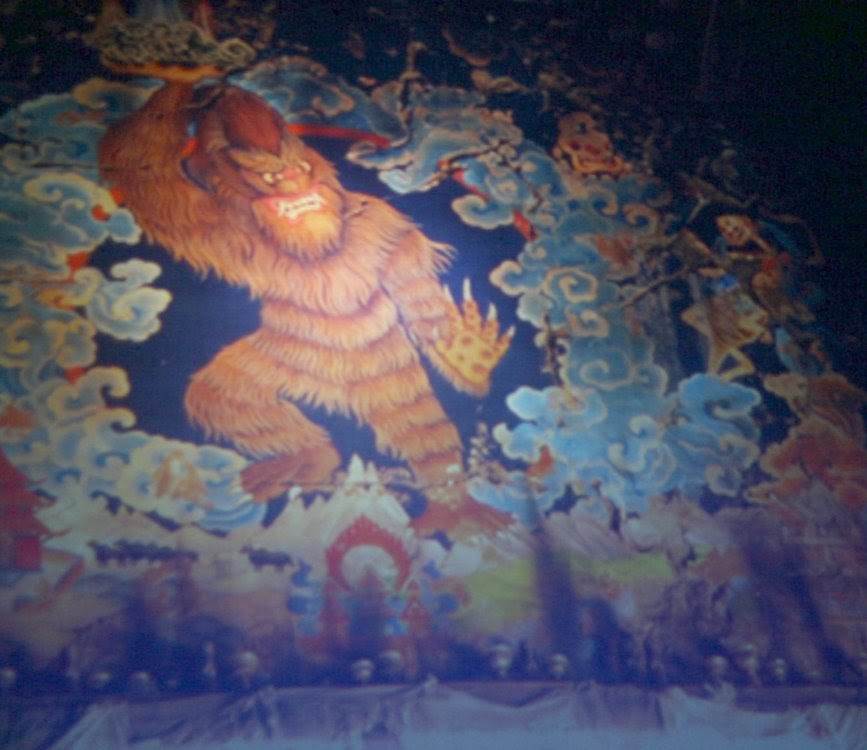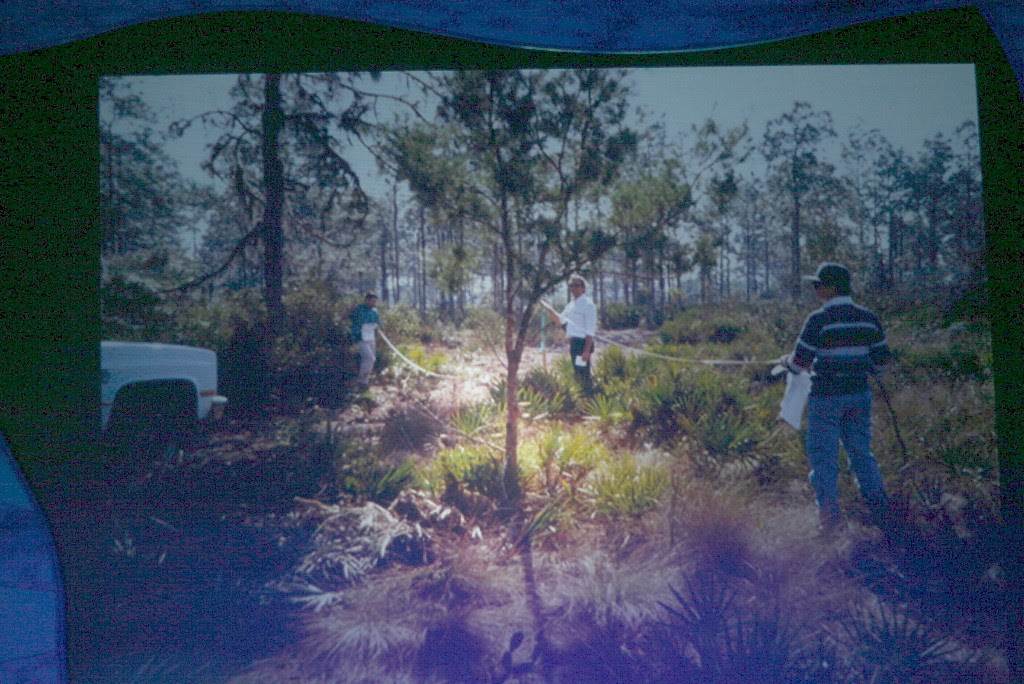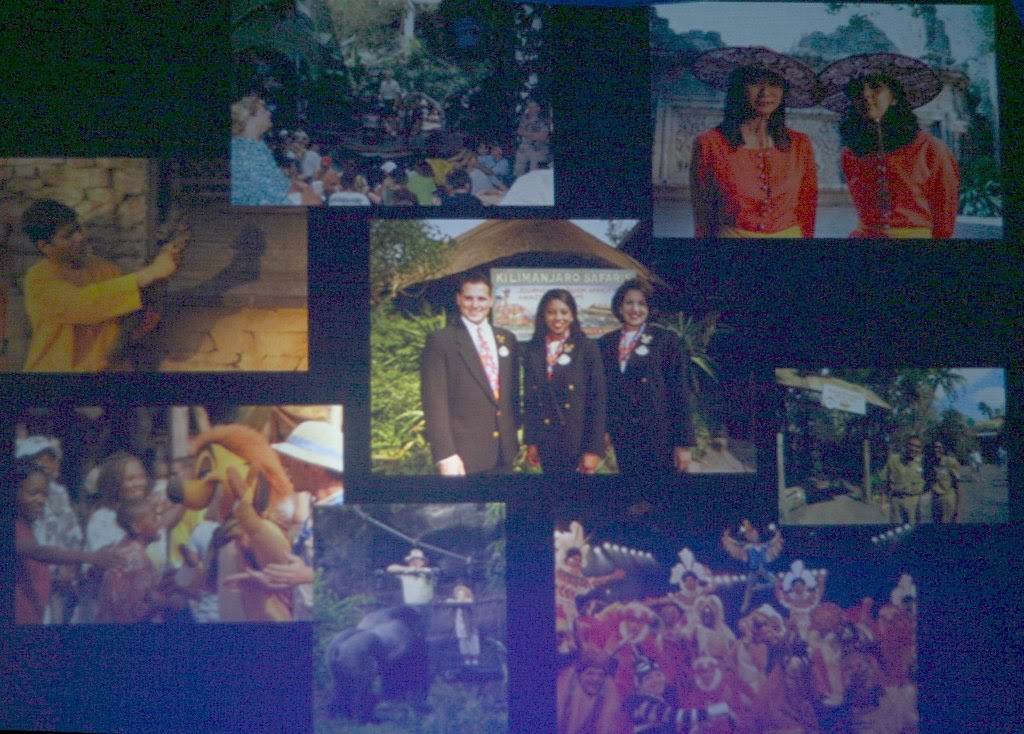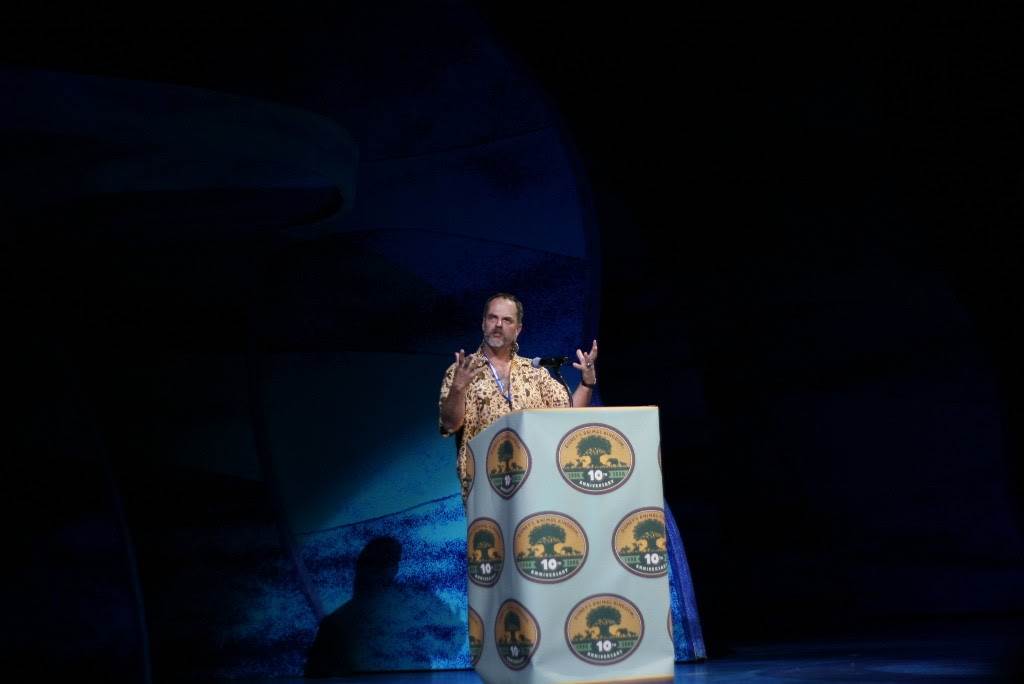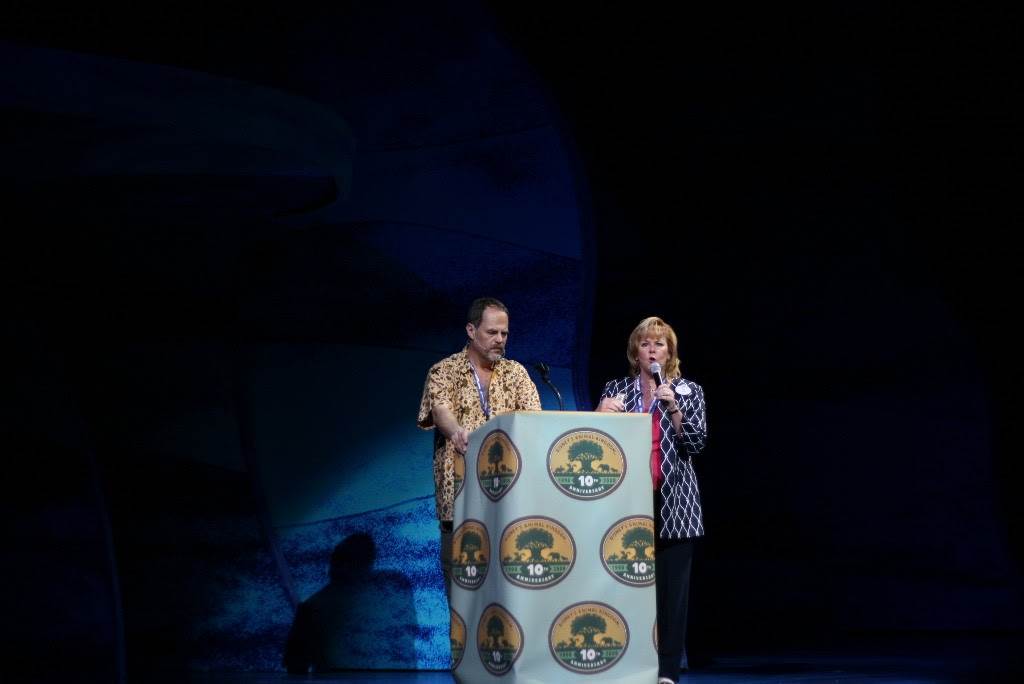Today is Animal Kingdom’s 23rd anniversary. Way back in 2008, on its 10th anniversary, the chief imagineer behind Animal Kingdom, Joe Rohde, gave a presentation to guests inside the park. Today we republish that presentation (Originally posted – April 23, 2008)
Imagineer Joe Rohde gives a 45 minute presentation to Disney guests on Animal Kingdom's 10th birthday
Animal Kingdom Vice President Val Bunting introduces Joe Rohde
Imagineering has been around a long time. It's a diverse group in both work backgrounds and points of view.
Joe recounts the very first meeting he had about Disney's Animal Kingdom. It was a very brief discussion with Michael Eisner possibly back in August 1989 where it was stated that people like animals and people like Disney. There were many ideas floating around the company and it was in many ways a dark horse. They had to overcome the Strategic Planning report that came to conclusion that Disney didn't want to enter the zoo business. The team saw the report as almost a guideline of what not to do in bringing a Disney animal park to life.
Disney's Animal Kingdom was developed in a similar way to a play, a movie or a novel. It was designed to tell a story. Joe explained that the best way to get the value out of Animal Kingdom is to slow down and digest the experience as you would read a complex novel.
Aerial view of the Disney's Animal Kingdom site location before the project began. Africa sits where the three sandy pits are toward the top of the picture and the Tree of Life sits about the where the sandy pit is at the top of image on the edge of the dark green foliage. Joe remarked on the almost absurd fact that a bunch of Imagineers were offered this large parcel of land and millions upon millions of dollars to create Disney's Animal Kingdom.
Early images of the team measuring out the land for development, possibly the area of the Tree of Life. Most of the area was scrub pine but there were several large oaks as well. They were able to save those.
Beginning stages of what would later become Asia. The foundations of the Asia bridge are pictured. Joe recounted stories of the vastness and emptiness of the project describing the scene as like something out of Lawrence of Arabia. In fact he shared that he once got lost while out on the developing project. There were just mounds of dirt and trails with no real geographic markers.
Disney's Animal Kingdom was a creation. It is a fiction. Joe spoke about the importance of theme. If a story is to stay strong throughout it is important to establish the theme. He shared his personal irritation at the use of the word theme as a verb. It is a noun. He explained that you cannot theme a thing. "Theme is the underlying value system upon which a story is built. It is not the fake wood detailing on the outside of a box."
In determining the theme of Disney's Animal Kingdom they identified their key message — the idea that nature itself has a value that is a greater value than the value of anything else you can put on the other side of the balance. Nature's value is greater than money. Nature's value is greater than convenience.
The intrinsic value of nature is at the heart of Disney's Animal Kingdom story. Elements of Animal Kingdom support this story and create a setting where it is fitting to see animals.
When you think about creating a park that highlights the value of nature you realize that such a place would focus more on landscape than on architecture to carry its message.
However, the typical planters and greenery of a traditional theme park while landscape doesn't carry your message. Perhaps it reflects more the power of mankind.
They organized the various types of landscaping options, giving them a variety of choices to carry the message.
Evaluating the lists on the left and the right — you would select the right list to illustrate the value of nature. They reflected the message of nature in the landscape by selecting a more unkempt, less linear style, permitting natural patterns to take place.
They put the architecture in a subordinate position to the landscape in their designs. The architecture would either celebrate nature or be viewed as succumbing to nature.
Joe shared the various themes at the heart of Disney's Animal Kingdom — not only the intrinsic value of nature but also the overpowering effect of physical adventure that if you go out and dare yourself to do things you'll come back changed.
The theme of the universal love of animals that one way or another, whether it's a live animal or an imaginary animal, a prehistoric animal a storybook animal, one way or another there's a form of the animal world that brings people emotionally alive and were used to bring people into contact with this idea. The development of these themes and ideas happen before they begin ride development, shows, and other park elements.
Joe Rohde shared an image of the cards that feature the ideas of the imagineers as they developed Disney's Animal Kingdom.Diagraming out the story of Disney's Animal Kingdom. Looking at the park's values and its opportunities they would develop
The diagrams to illustrate how the story would come to life for the guest touring the park. Joe compared the process to a tree where you start at the root and you know you're going to end up on one leaf but you're not sure which leaf so you travel up the tree where you encounter various challenges, opportunities and you find your way out.
The diagrams don't necessarily reflect what was built but offer insight to the thought process of its development.
By diagraming out the journey the design team was able to keep the story anchored.
Joe gave the example of designing Africa. There are a variety of ways to represent Africa but in keeping their themes in mind they were able to determine which vision of Africa would support the park's story. In this case they selected the Swahili architecture of the east coast of Africa that inspires Harambe. It is a true reflection of architecture but they selected it because the cubeness and the harshness of angles within the architecture here provides a sharp contrast to the natural beauty that is discovered on the safari. So despite the fact that the safari is a well designed machine for keeping animals alive and bringing thousands of guests through each day, it feels natural.
To showcase that the process isn't quite as neat and tidy as it might appear through the images above Joe Rohde showed various concept sketches for the entrance to Animal Kingdom. Among them was a large ark.
Garden entrance with guests in a procession of animals. However, imagine the photo album of families smiling at the entrance surrounded by hundreds and hundreds of sculpted animal behinds.
Another concept was cottage style with stained glass – very "Woodstock" but it was decided that it had a narrow audience and it's not about animals.
Another thought was to create a gigantic cave grotto entrance like the creation of the world but the amount of concrete needed made this idea impractical. But there was something used in that idea — the idea of creating a transitional period where people could slow down as they enter.
So while the cave grotto was not fully realized it gave birth to The Oasis which guests encounter just after the turnstiles at Animal Kingdom.Initial rendering of the Tree of Life. Looking at the sketch you'll notice the design is for a structure much smaller than even Tarzan's Treehouse. Joe Rohde talked about evaluating concept sketches and looking at the height of adults in the image and then the various other elements within the sketch to determine their eventual size. At this time the tree wasn't planned for the center of the park.
Eventually they determined the Tree of Life was the symbol they wanted for Disney's Animal Kingdom so they began to increase its size. A thought was to create a semi geodesic dome which would have leaves stuck to it. It was to feature a restaurant on the bottom floor. Very late in the development of this design one of the engineers explained that the steel and the branches were substantial enough to hold anything. They would no longer need the geodesic dome.
So very quickly they reconceptualized the Tree of Life that was built.
The giant framework skeleton base of the Tree of Life
The scaffolding presented a unique challenge to the design team. The workers were unable to view the animals as they were being carved into the tree trunk.
Numerous skilled sculptors helped to create the magnificent images on the Tree of Life.
The design team did massive amounts of research
It was important that Disney's Animal Kingdom really feel like reality.
Joe explained that building a three dimensional place is not the same as a picture. He explained the various levels of editing and filtering that impact the final image of a place that makes its way into a picture book. When you go to a real place you come away with the sense of what it is like to be there.
The design team seeks to bring those experiences, not just the visuals, to life in their creations.
Joe Rohde explains that the prayer flags at Expedition Everest were a late addition to the design. But they are vital elements to the experience. While in the Himalayas the team was struck by how aware you become of the wind and realized that the flags flapping in the breeze bring the wind to life there.
Viewing the vastness of the Serengeti, the team realized that they didn't have enough resources to faithfully reproduce that aspect.
However a moment such as this one they could reproduce in Florida.
Once home they would evaluate the many images they collected to determine what experiences they could bring to life at Animal Kingdom.
They would make notes on the pictures.
And they created techniques to mimic the qualities of the environment that had experienced and were bringing to life for the guests.
Joe reminded all that it is, however, a very highly designed environment. In fact the Kilimanjaro Safari was among the very first large landscape digital modeling ever done. It would take days to print out their images. You can see in the image the little shadows.
Joe explains that these well placed elevated areas are what assist in keeping guests from spotting more than 3 or 4 trucks out on the safari despite the fact that several dozen may be out on the trail.
Guests don't comprehend the reality of where they have travelled instead becoming immersed in their safari adventure.
Concept art of Kilimanjaro Safari
Among the challenges of designing the Kilimanjaro Safari was the reality of using live animals.
These animals are not going to be in precisely specified places at specific times. You could also not direct the guest to look at specific location. As a designer they could not be assured of where the focal point, the animal would be at specific times. Digital ride through technology was not in use at the time so the design team created 180 degree story board for each 5 seconds of the attraction.
The design team would hold up these 180 degree sketches to get an idea of what types of scenes the guest on the attraction could view as they travelled through Kilimanjaro Safari.
An image of the flamingo pool during production
Virtually the same view as you ride by in the safari truck. The design team had to create a safe environment for the flamingos but they also had to keep the mechanisms for that environment hidden from guest view to maintain the natural feel of the experience.
The image in the upper left is the temple with scaffolding that inspired the environment in Asia. It assisted the design team as they were unsure how to provide the gibbons with a playful jungle gym setting while keeping true to the visual designs of Asia.
Another image on the left of the design team's experience and the resulting creation at Disney's Animal Kingdom
Disney's Animal Kingdom features the artwork of people from varying nations and cultures including Balanese carvers and bronze casters of Nepal. Not just items created in factories based on sketches of items seen abroad.
Expedition Everest is based in part on the idea Joe painted in 1991. This is a view from Flame Tree Barbecue to what Everest is now but in this image it is Bhutan instead of Nepal and the Safari Village that was Asia has moved on to the side of Asia instead of that side of island. Joe explained that originally the Safari Village was on the island you would cross over just for the safari. This idea was put away until the idea for developing Expedition Everest arose.
With the idea to bring Expedition Everest to Disney's Animal Kingdom the design team once again went through the creative process of how to bring a rollercoaster into the story, the theme of the park – the intrinsic value of nature. Joe went on to explain the oral tradition of the Yeti and its role as the protector of pristine forest environments.
The story of the Yeti as protector of the mountain reflected in the shrine leading up to Expedition Everest.
The design team selected specific architectural stylings from the region that assist in pushing forward the story.
A Nepalese artist was told the message of Expedition Everest and created this piece of art for the attraction.
Joe wrapped up his presentation reminding the cast members that their actions each day also continue that story.
The cast members of Disney's Animal Kingdom are a vital aspect of Disney's Animal Kingdom and carry forward the spirit of the park.
He reminds the cast that guests arriving at the park may be anxious they've spent a lot of money and are eager to reap back that value. The cast are integral to enabling the guest to retrieve the value at Disney's Animal Kingdom.
Joe Rohde explains that Disney's Animal Kingdom is most rewarding when the guests take the time to experience the park. Animal experiences do not happen in three second moments.
He continued that guests don't only come to the park to see beautifully designed environments. There are other places to do that. They come for a more emotional experience and that is among the elements that the Disney cast bring to life. He reminded all that the story is still evolving and thanked them for their part in it.
Val Bunting offers special thank you and congratulations to Joe Rohde on the 10th anniversary of Disney's Animal Kingdom.
Joe Rohde signs autographs on the 10th anniversary of Disney's Animal Kingdom

